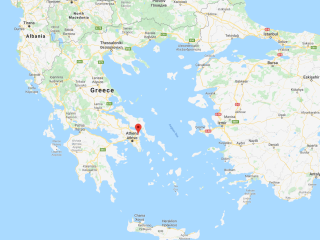Ancient Greece Photography - M1key - Michal Huniewicz

We will not be looking at all of ancient Greece here. We will instead focus on the key battles.
It was some years ago, while flying to Beirut, that I saw the Bay of Marathon through the window. How cool would it be to visit those ancient battle sites?, I thought.
Sources:
1,
2,
3,
4,
5,
6,
7,
8,
9,
10,
11,
12,
13,
14,
15,
16,
17,
18,
19,
20.
Uploaded on: 2019-12-22.
Glory to the Victors
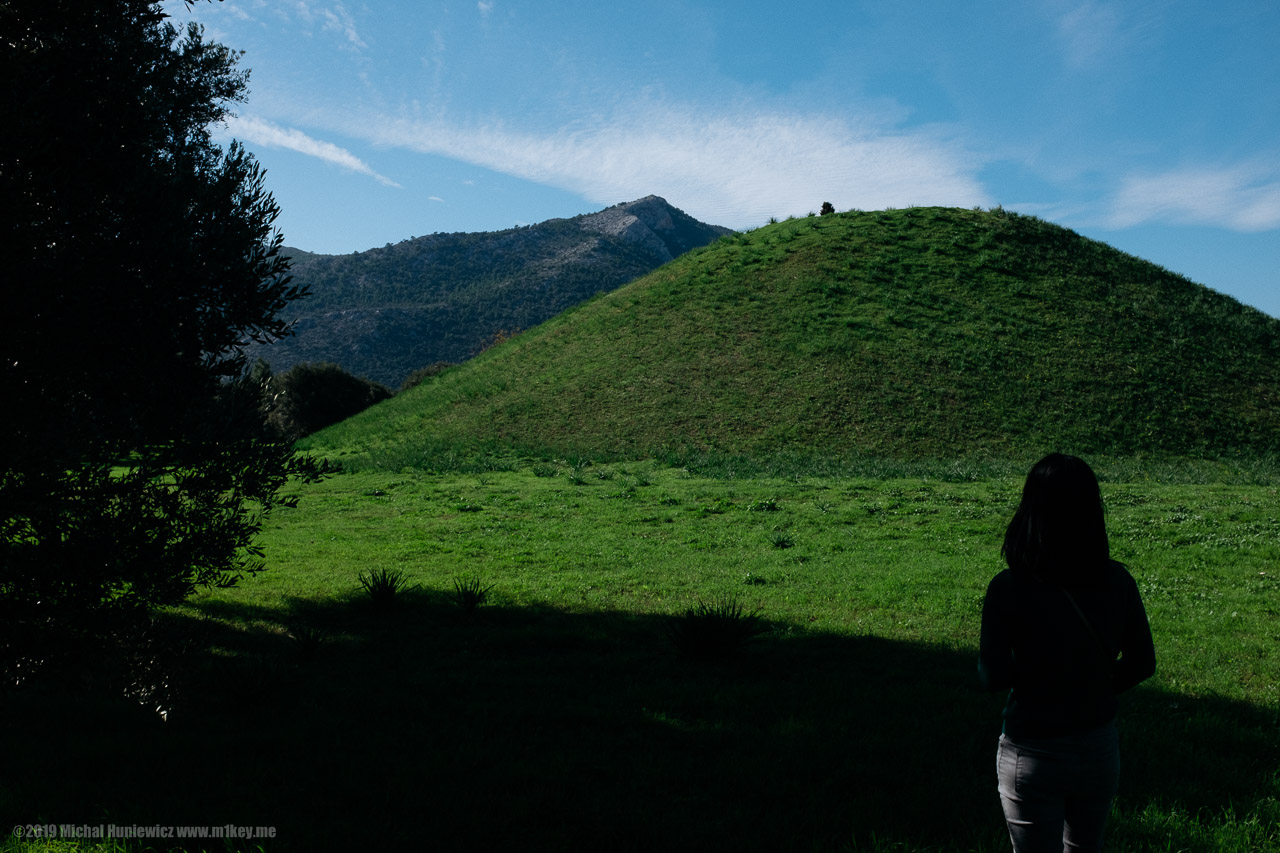
Athens became the world's first democracy [3] after they kicked out the tyrant Hippias (with the help of the Spartans acting motivated by the Delphi Oracle - that had been bribed by an Athenian family [2]). The Athenians then proceed to get involved in what would become known as the Ionian Revolt - striving to free Greek states in Asia Minor from Persian rule, in an attempt to bring democracy to those states, that were supposedly former Athens colonies. [4]
The first Persian Empire was young then, and ruled by an emperor-usurper, Darius. He spent much of his time extinguishing revolts against his in fact illegitimate rule. He simply could not tolerate the Athenians causing trouble in Asia Minor. The first Persian invasion of Greece then took place (492 – 490 BC) - led by the Persian general Mardonius and no other than Hippias himself. [5]
In the photo, the burial mound containing the ashes of the Athenians killed in the Battle of Marathon.
The first Persian Empire was young then, and ruled by an emperor-usurper, Darius. He spent much of his time extinguishing revolts against his in fact illegitimate rule. He simply could not tolerate the Athenians causing trouble in Asia Minor. The first Persian invasion of Greece then took place (492 – 490 BC) - led by the Persian general Mardonius and no other than Hippias himself. [5]
In the photo, the burial mound containing the ashes of the Athenians killed in the Battle of Marathon.
ISO 200, 23mm, f/11.0, 1/240s.
The Mini
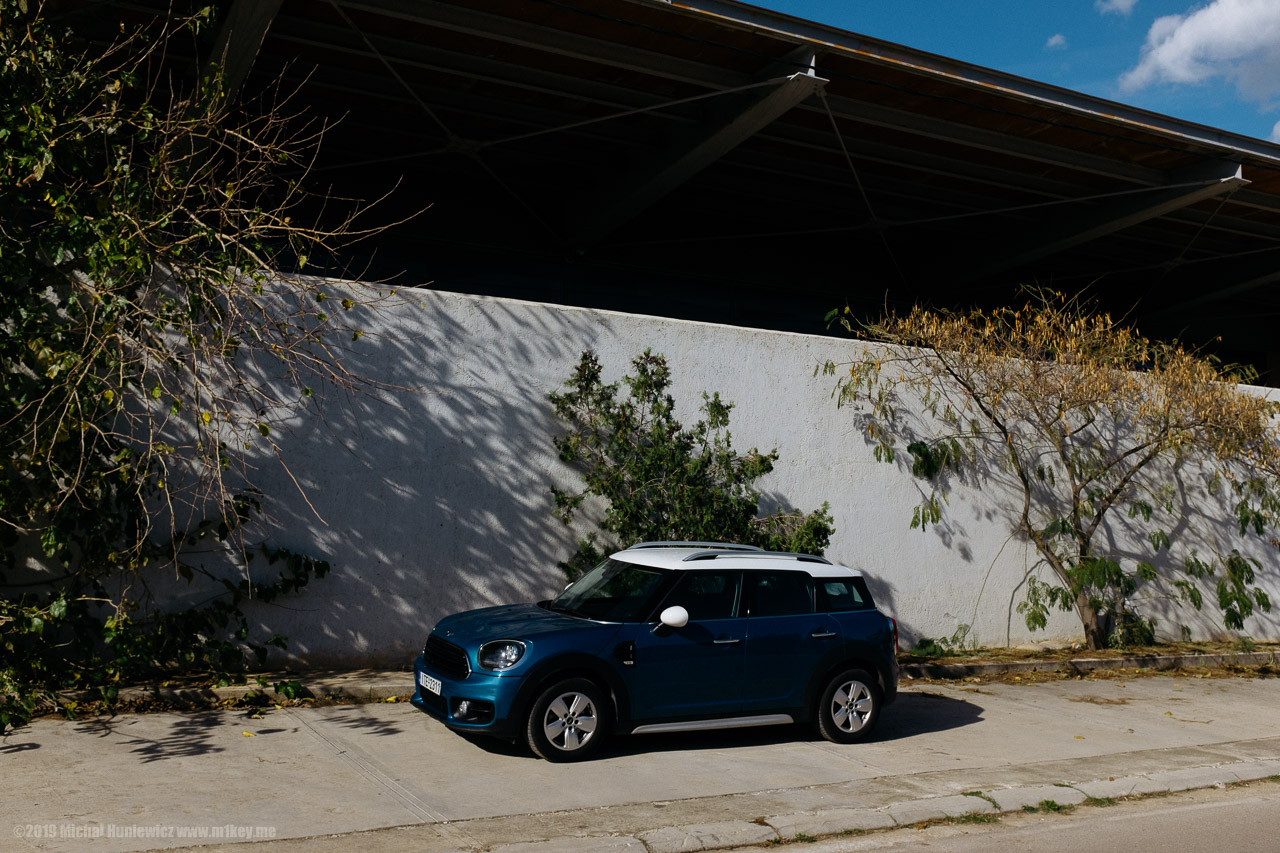
We rented this surprisingly petrol-hungry car, and ventured outside of Athens to see the site of the Battle of Marathon.
ISO 200, 23mm, f/5.6, 1/1250s.
Early Helladic Cemetery
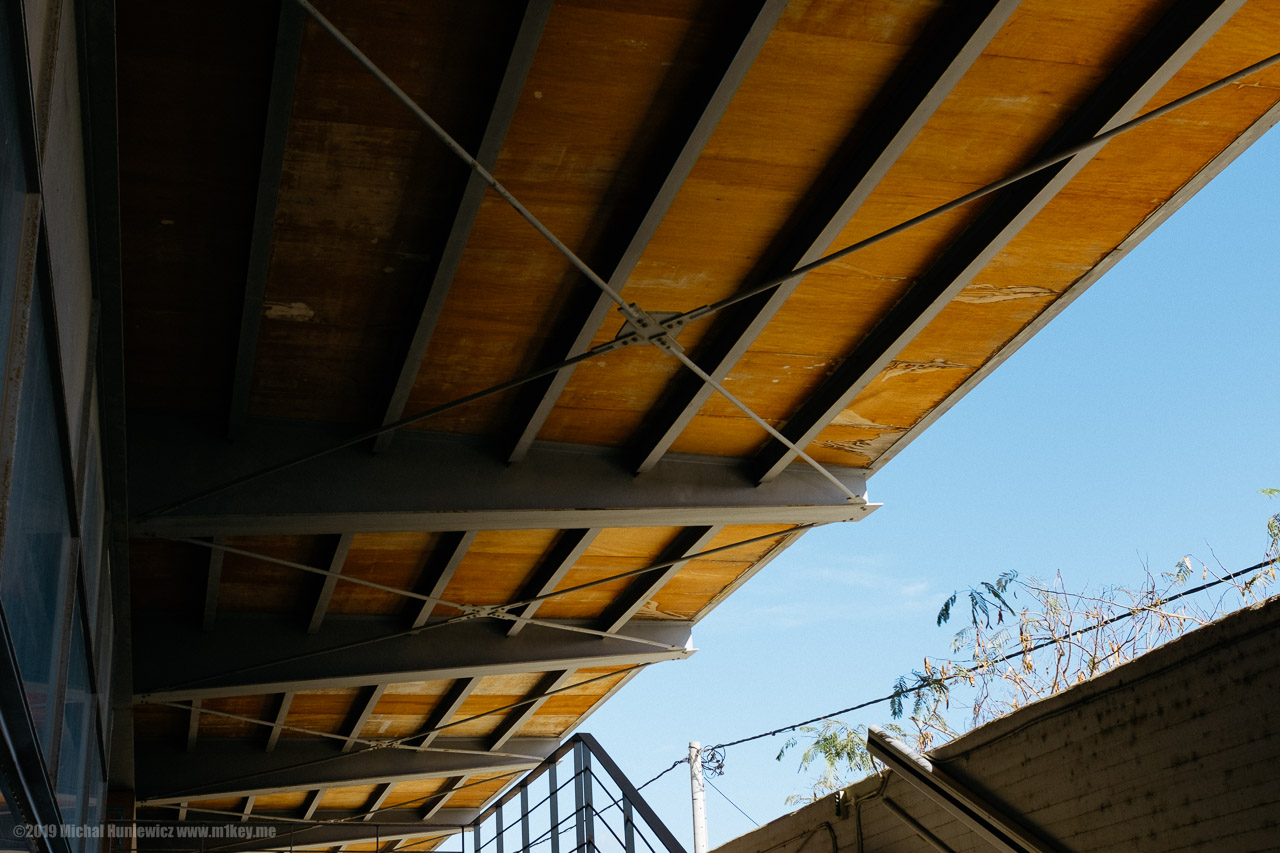
As part of the first invasion, a large Persian force landed at Marathon, east of Athens, as advised by Hippias. The goal was for the Persian infantry to cut off Athens from the land, and for the navy to cut them off from the access to the sea.
In the photo, the Early Helladic Cemetery, an archaeological site permanently shut, because the modern building that envelops it wasn't built according to standards, and isn't safe.
In the photo, the Early Helladic Cemetery, an archaeological site permanently shut, because the modern building that envelops it wasn't built according to standards, and isn't safe.
ISO 200, 23mm, f/5.6, 1/280s.
No Olive Branch
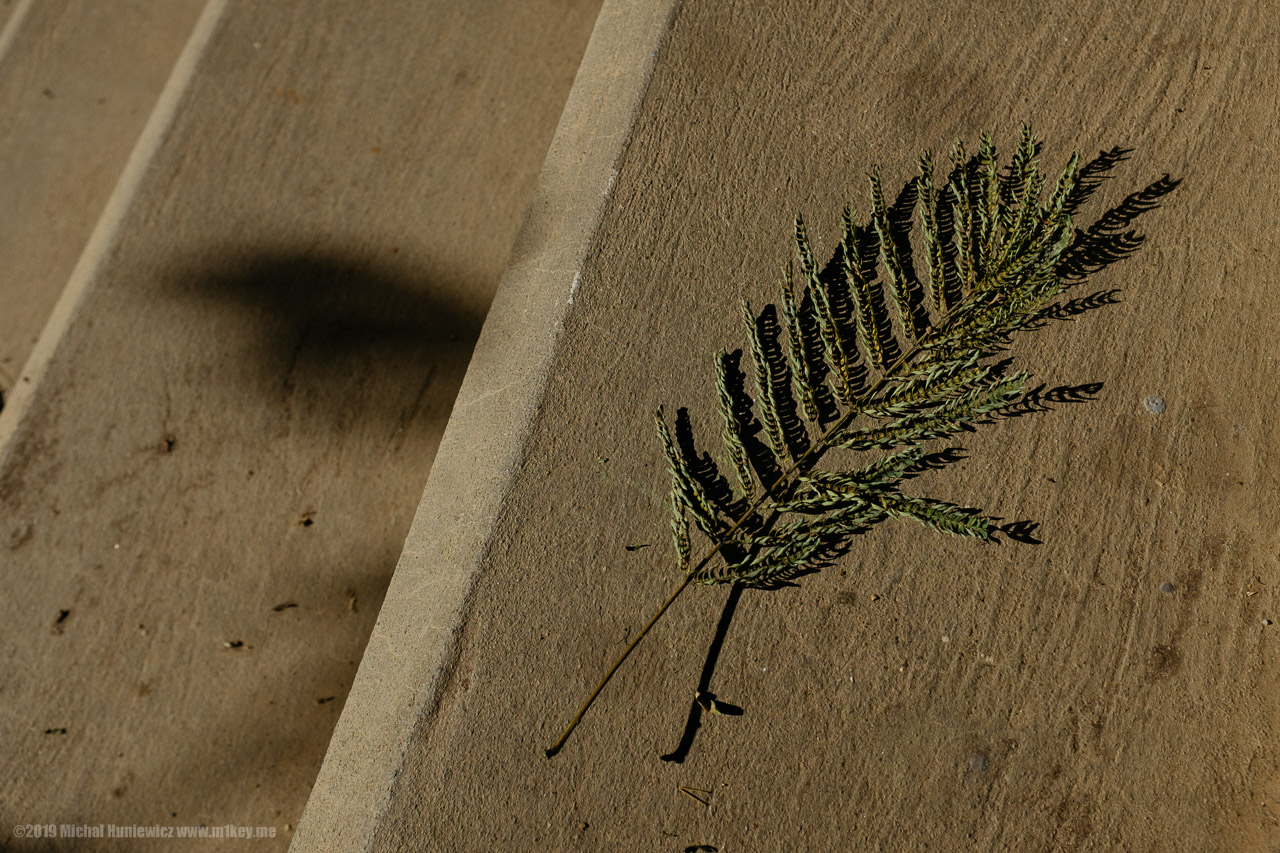
The Athenians marched 42 kilometers or 25 miles to meet them at the Bay of Marathon, preventing them from accessing the city through the land route, blocking two exits from the plain. I have been unable to confirm where those exits actually were - presumably one path leading through the mountains, and the other along the beach. They also sent their greatest runner, Pheidippides (or Philippides in some accounts), 225 kilometers or 140 miles to Sparta to request that the Spartan army march to the aid of Athens. It took him two days. [1]
ISO 200, 23mm, f/5.6, 1/1600s.
Spartan
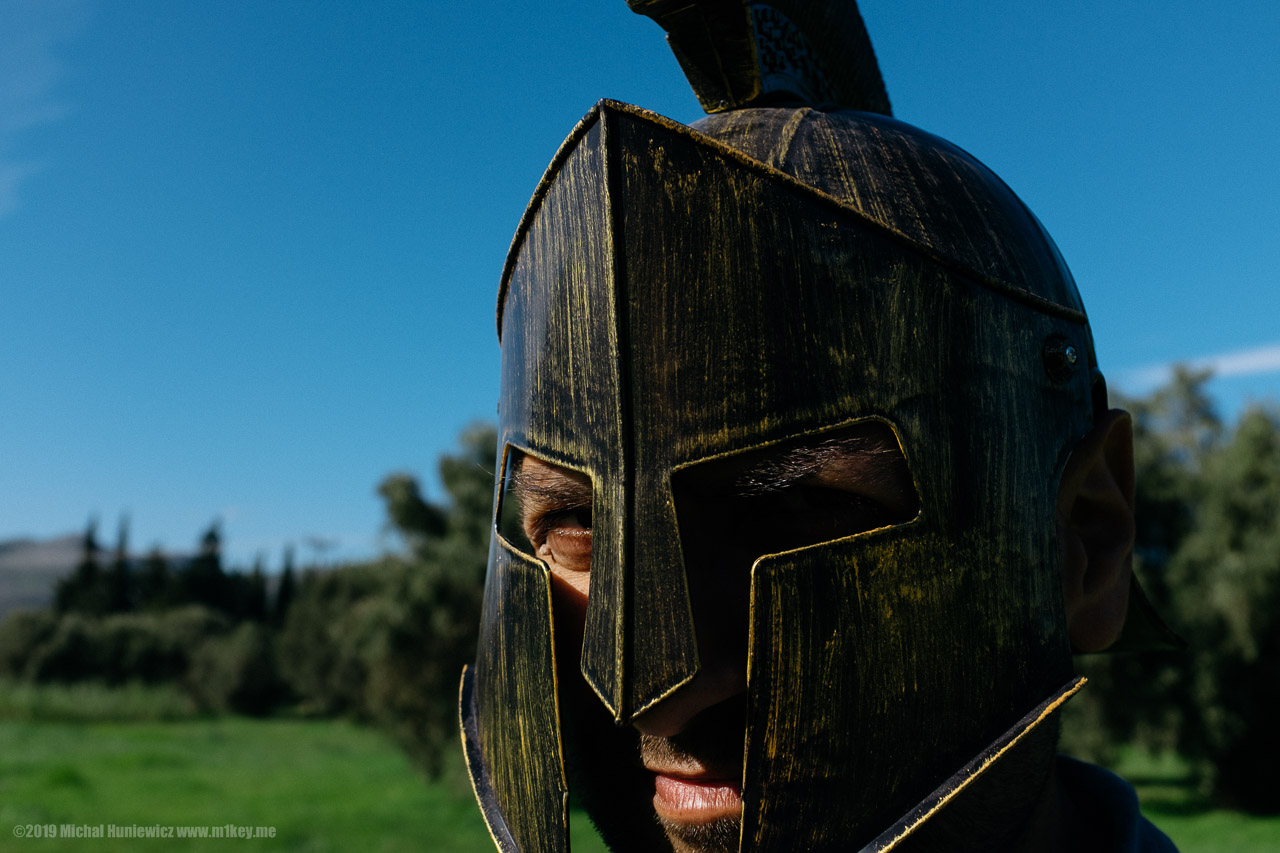
But the Spartans refused to come, busy with religious ceremonies. Thus, the world's first democracy, a tiny city state, would face off the greatest empire the world had ever known - alone. All the Persian king's subjects were ranked as his slaves [7], while the Athenians brought free men fighting for their own land and freedom and independence.
In the photo, my friend Ammar wearing a toy helmet.
In the photo, my friend Ammar wearing a toy helmet.
ISO 200, 23mm, f/5.6, 1/850s.
Bay of Marathon
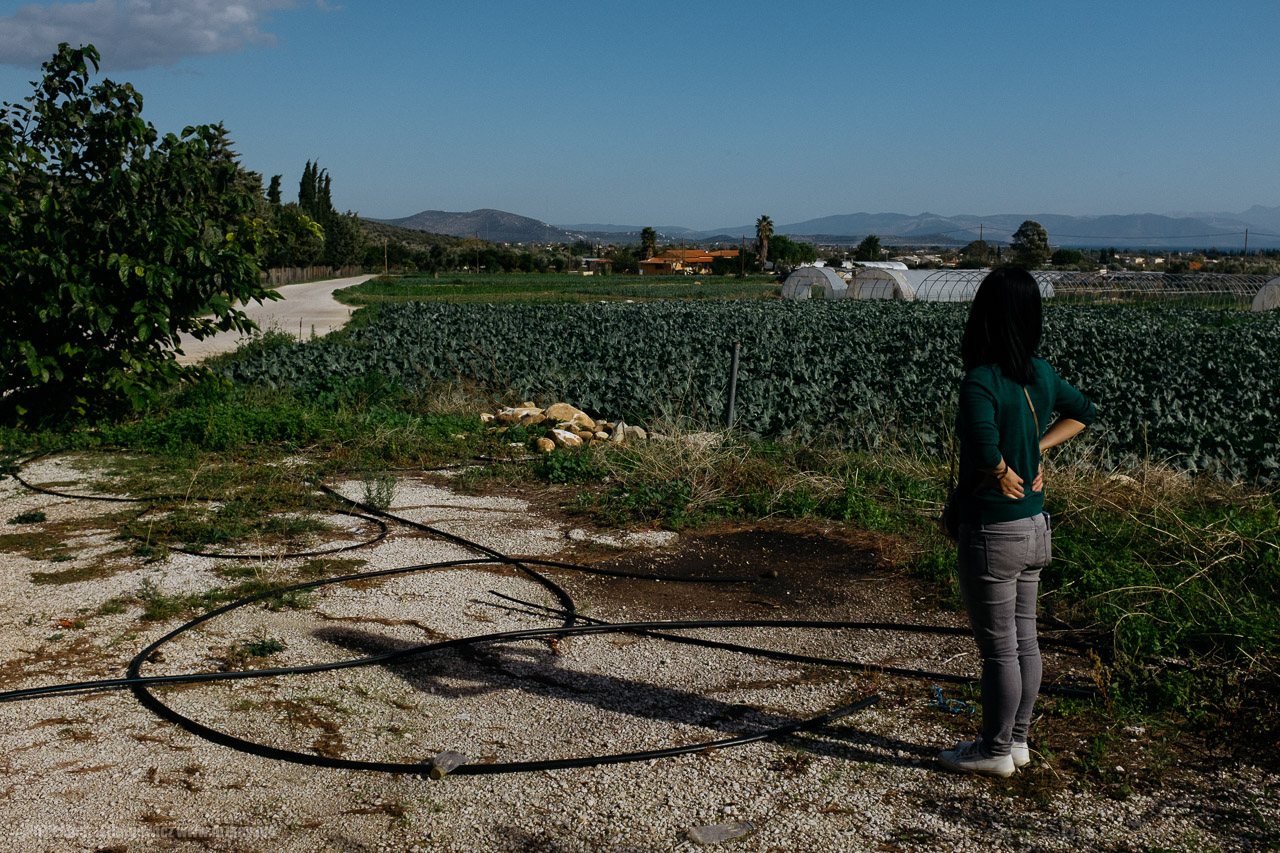
Alone until the city of Plataea sent every hoplite they could muster - 1000 of them. The Persians brought to the battle, according to modern estimates, 25,000 infantry and 1,000 cavalry. That and over 100,000 oarsmen and sailors. The Athenians themselves brought 10,000 fighting men.
In the photo, Dzinman looking towards the sea.
In the photo, Dzinman looking towards the sea.
ISO 200, 23mm, f/5.6, 1/1600s.
Baby Skeleton
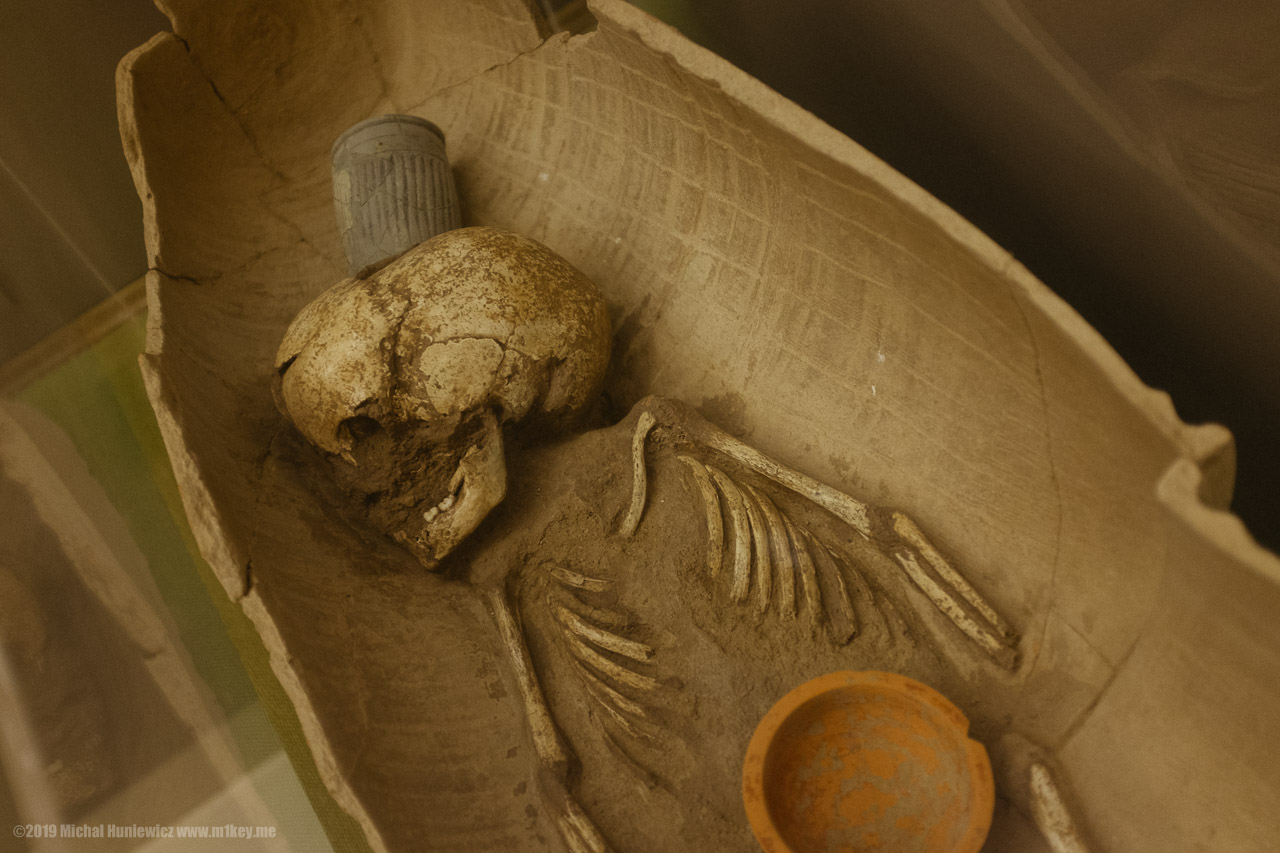
Neither side wished to attack first, the Athenians hoping for the Spartans to join after their ceremonies ended. After 5 days of that nerve-wracking stand-off, something finally triggered the battle.
In the photo, a jar in which a child was buried.
In the photo, a jar in which a child was buried.
ISO 640, 23mm, f/2.0, 1/60s.
Archaeological Museum of Marathon
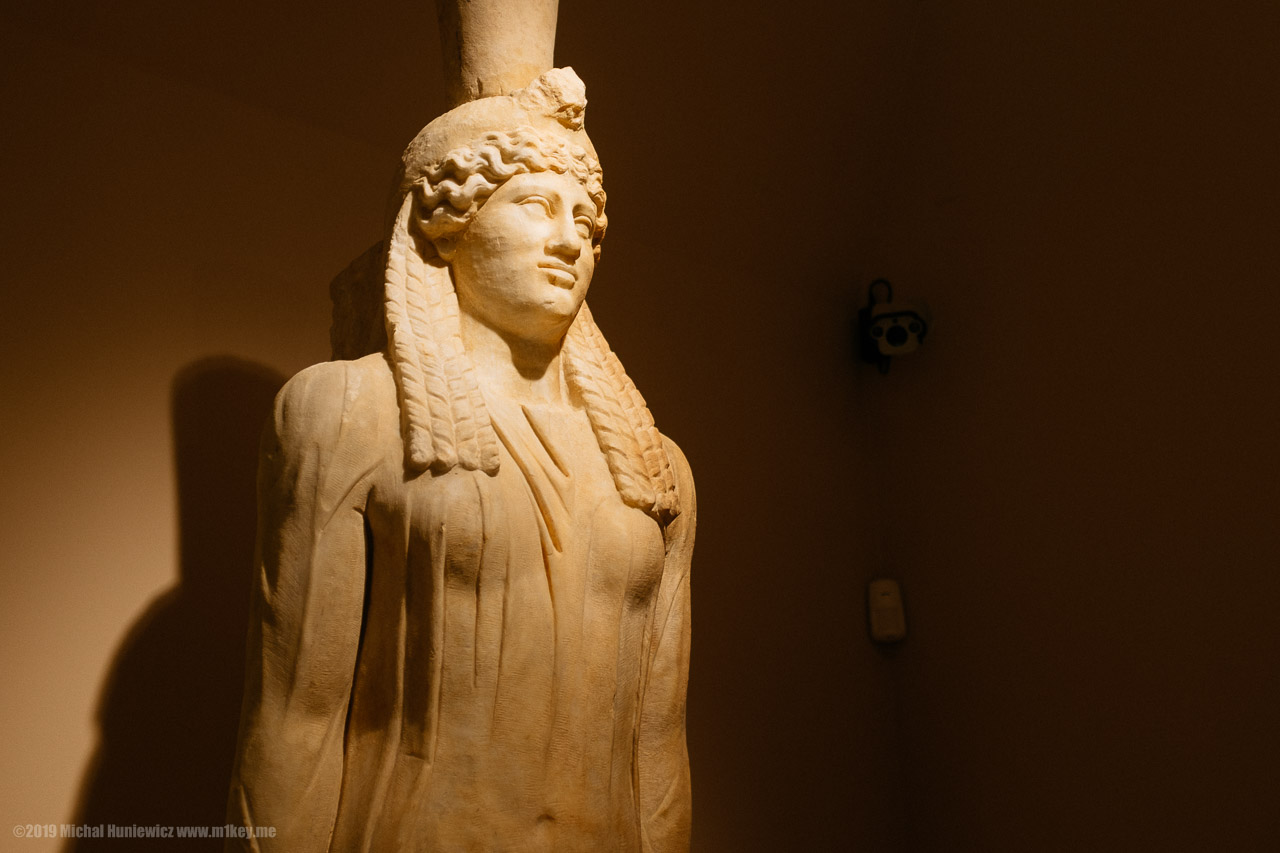
But what was the trigger? At the sleepy Archaeological Museum of Marathon, they produced a guide for us who actually knew his history. Ultimately, everything goes back to Herodotus, and he spoke to some of the survivors of the battle.
ISO 200, 23mm, f/2.0, 1/110s.
Statue
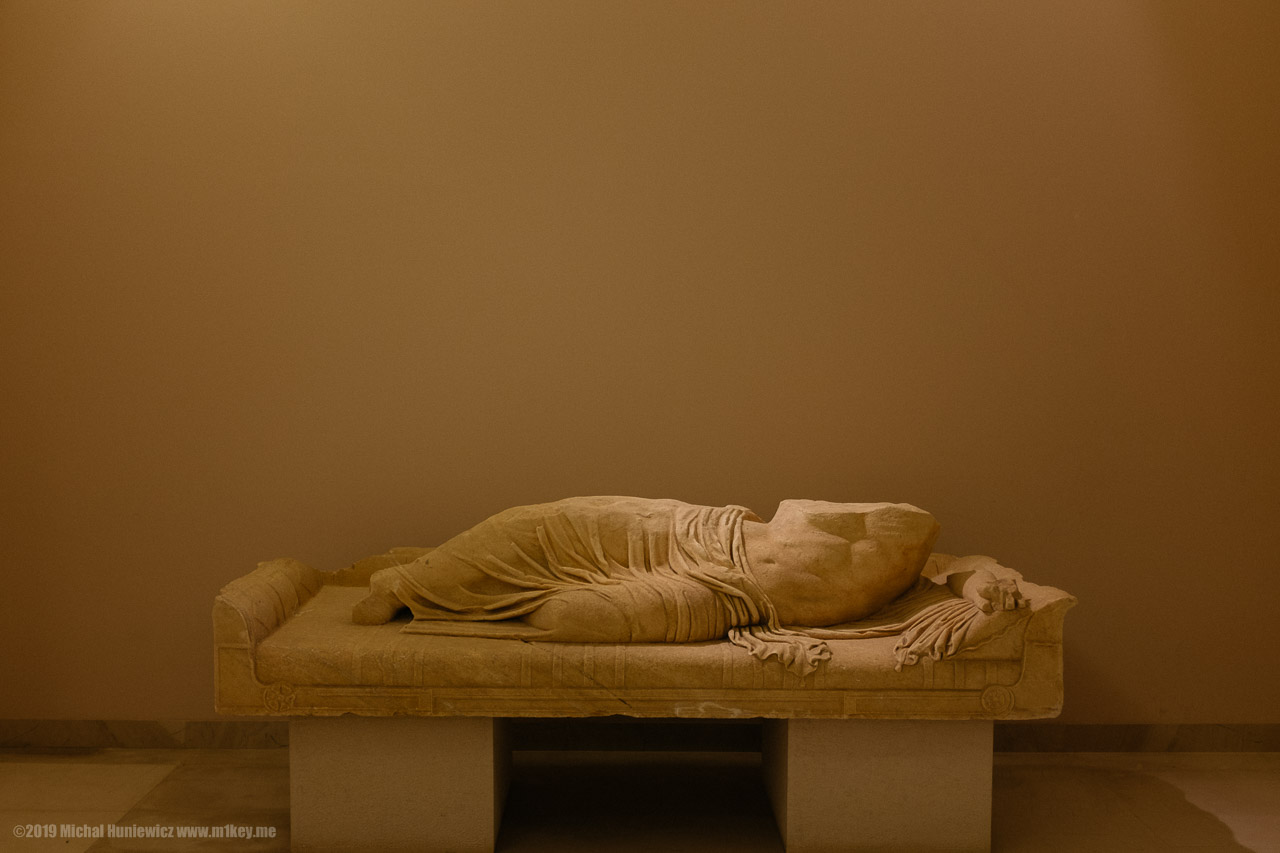
That's the interesting thing about the Battle of Marathon and other events from that era - we simply have no sources other than Herodotus - referred to as the father of history. [6] "For the first time, a chronicler set himself to trace the origins of a conflict not to a past so remote so as to be utterly fabulous, nor to the whims and wishes of some god, nor to a people's claim to manifest destiny, but rather explanations he could verify personally." [1] The Persians did not write anything that we can identifty as an account of those events, except for some bureaucratic tablets. [7]
ISO 200, 23mm, f/2.0, 1/105s.
Archaeological Museum of Marathon
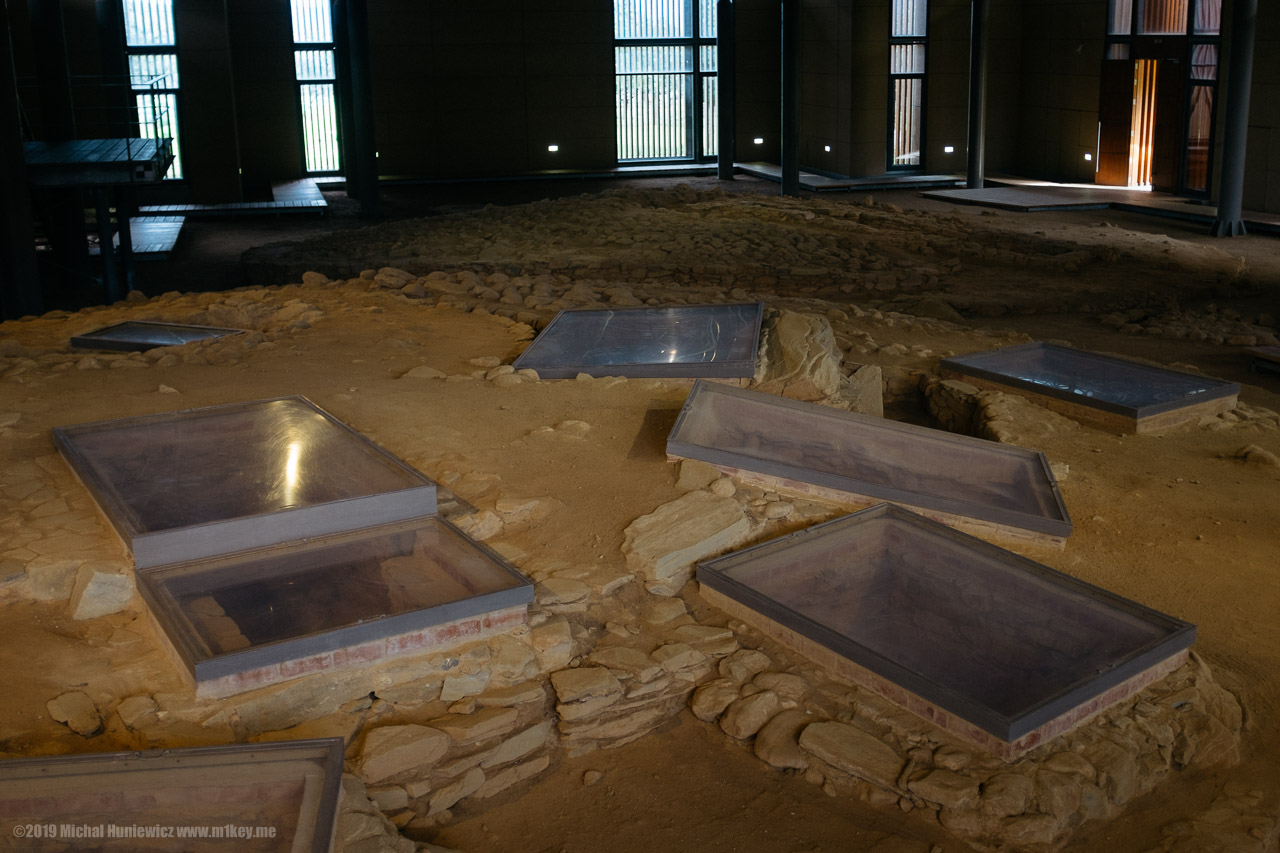
Whatever triggered the battle, the "naked Athenians were transformed into fearsome automata of bronze" [7], and they attacked the lightly-armoured Persians.
In the photo, tombs in the museum, unrelated to the battle (in fact even older).
In the photo, tombs in the museum, unrelated to the battle (in fact even older).
ISO 200, 23mm, f/2.0, 1/60s.
The Burial Mound of the Plataeans
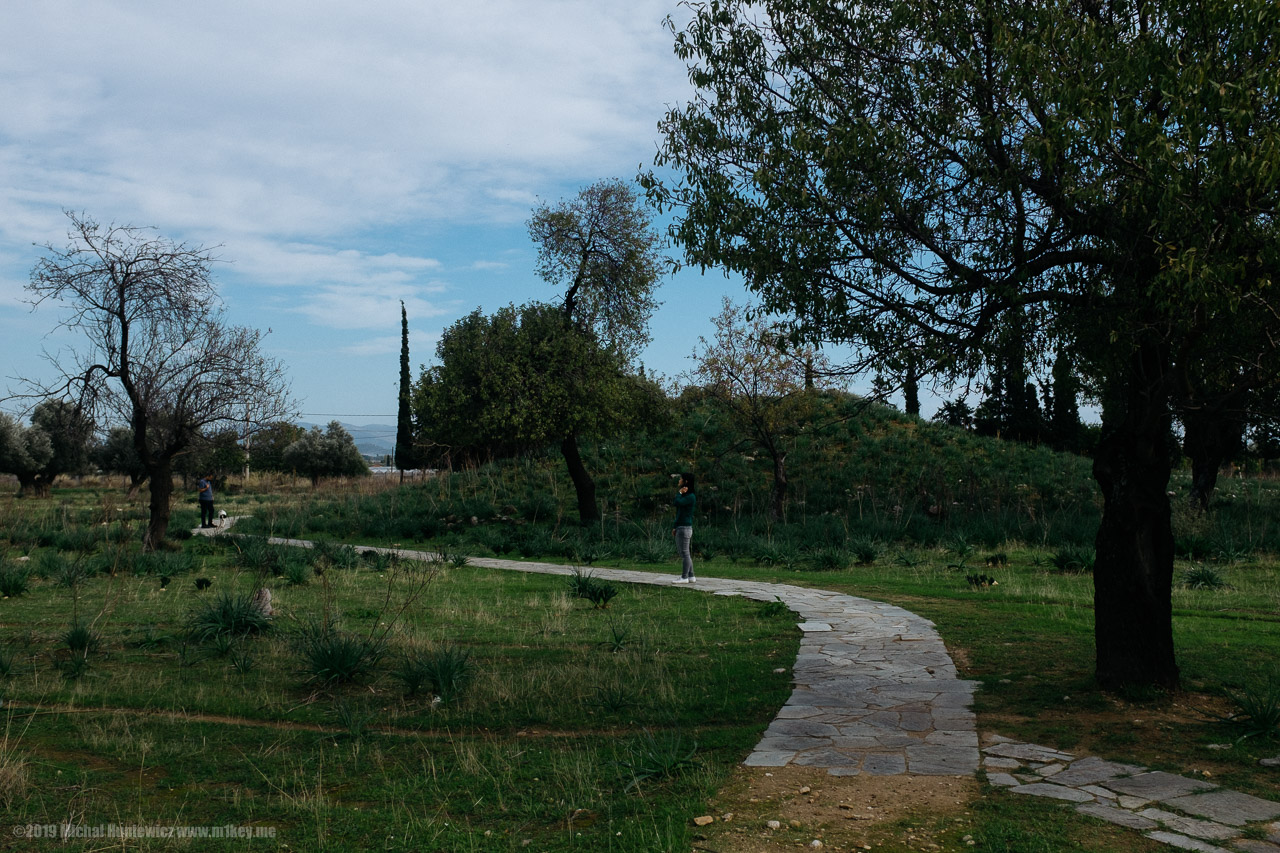
The Athenians were showered with arrows that bounced off their armour and shields. They formed a long line, weak and thin in the centre and thick on the sides. What was simply a measure of having a battle line long enough not to be enveloped by cavalry was an accidental tactical advantage, one the Athenians had not planned, and one that would be properly used with full awareness only decades later at the Battle of Luctra. [8]
In the photo, the burial mound of the Plataeans.
In the photo, the burial mound of the Plataeans.
ISO 200, 23mm, f/5.0, 1/950s.
The Burial Mound of the Plataeans
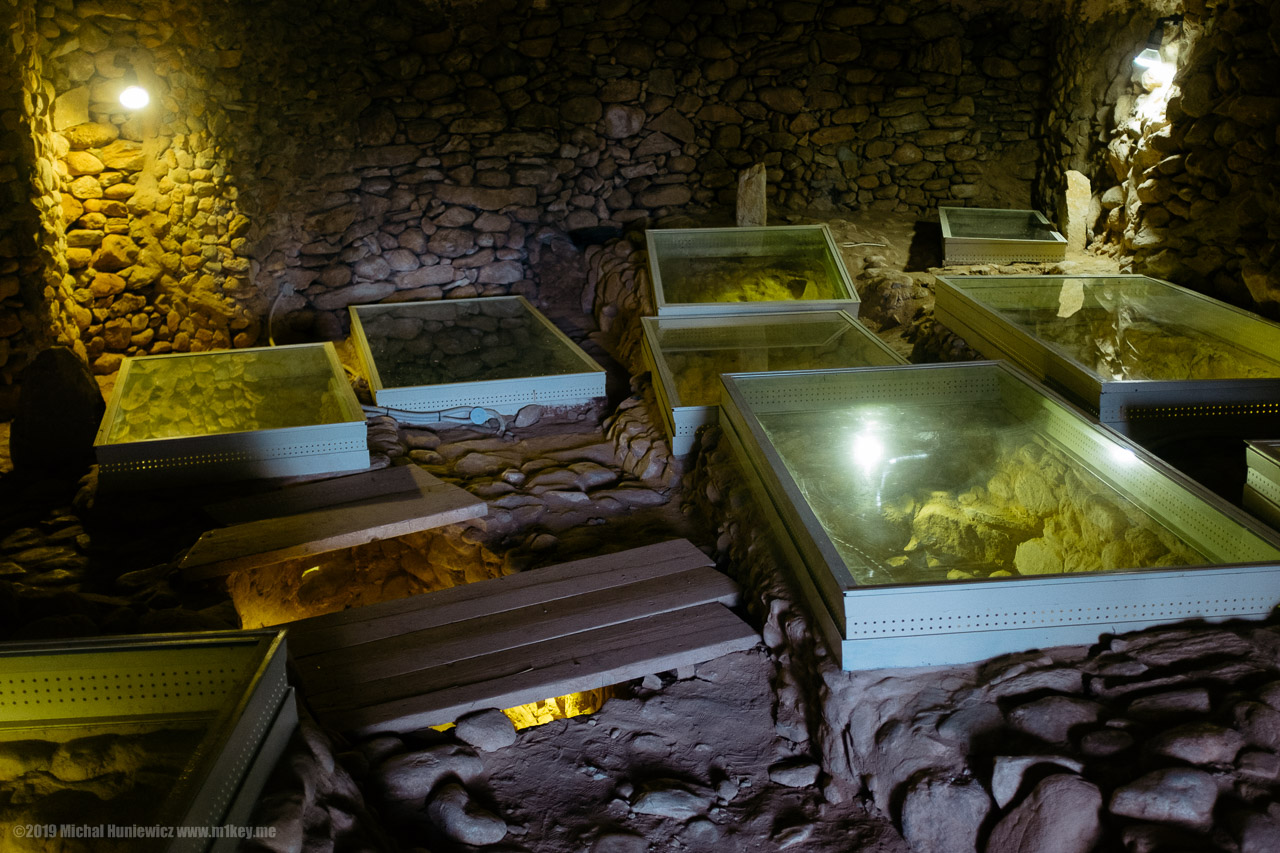
The weak Greek centre gave way, but the strong wings ploughed on, harvesting the ligthly armoured Persian levies. Once those panicked and began to flee, the Greek wings turned their attention to the prime Persian force, now effectively trapped in the middle. The slaughter of the Persians began. The Persians cracked and ran, some to the ships, some, lacking in the knowledge of local terrain, into the swamps, where they would drown. In disarray, the Persian army was loaded onto the ships (including the cavalry), and an order was made for them to sail to Athens, leaving the Greek soldiers on the Marathon beaches.
In the photo, inside the burial mound of the Plataeans.
In the photo, inside the burial mound of the Plataeans.
ISO 1000, 23mm, f/2.0, 1/60s.
Plataean Tomb
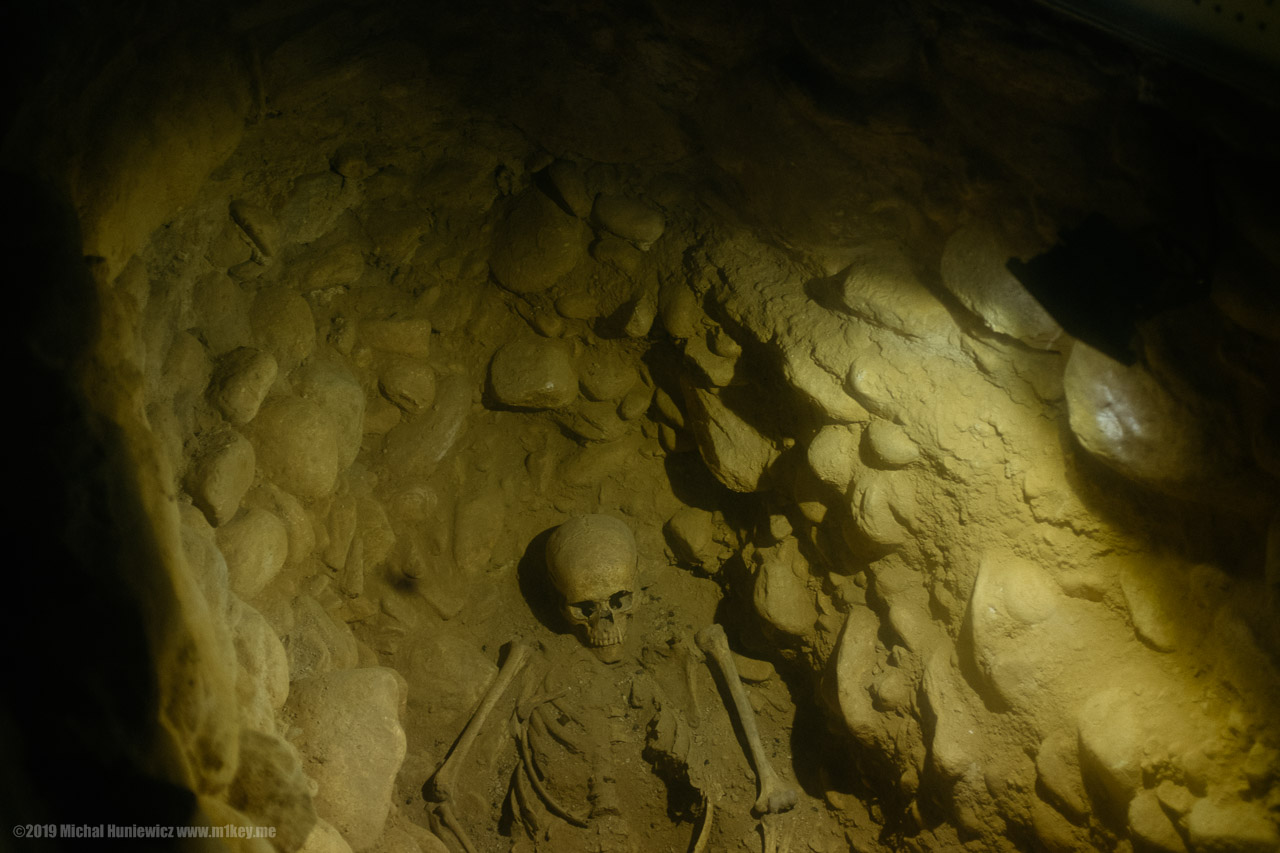
All of its fighters at Marathon, Athens was undefended. The frantic race began - the Greeks marching back overland, the Persians sailing around the coast.
In the photo, one of the skeletons inside the mound. According to our guide, it was likely but not certain these people fought in the battle.
In the photo, one of the skeletons inside the mound. According to our guide, it was likely but not certain these people fought in the battle.
ISO 500, 23mm, f/2.0, 1/60s.
Crushed Skull
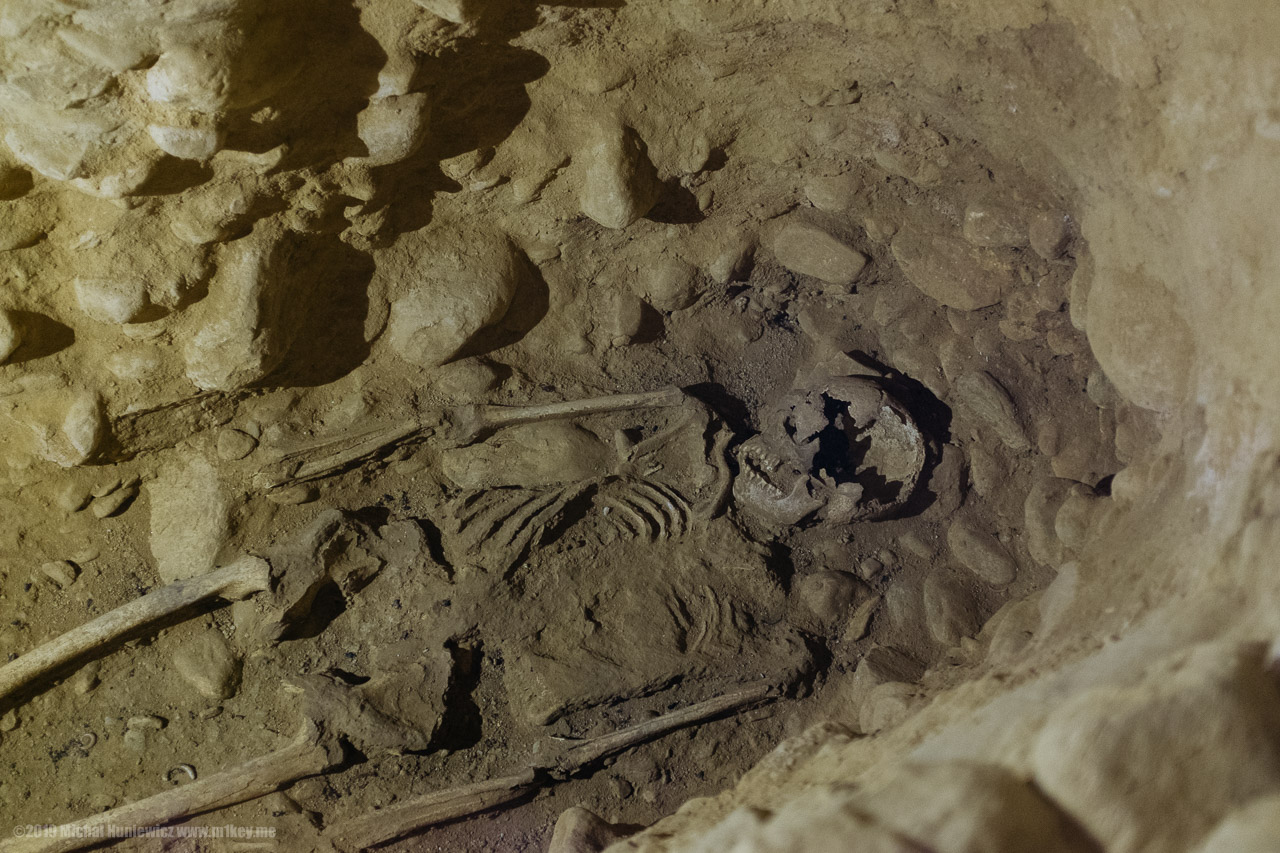
By the time the Persian navy made it to Athens, the exhausted Greek warriors stood guard ready for another attack, their "flesh steaming with the gore and tissue of battle" [19]. The element of surprise was lost. The first Persian invasion of Greece was a failure.
According to historian John Lazenby, "Marathon was won because ordinary, amateur soldiers found the courage to break into a trot when the arrows began to fall, instead of grinding to a halt, and when surprisingly the enemy wings fled, not to take the easy way out and follow them, but to stop and somehow come to the aid of the hard pressured centre." [1] Tom Holland says that had the Greeks lost the Battle of Marathon, there would have been no Plato, and without him, probably no Islam. [7]
According to historian John Lazenby, "Marathon was won because ordinary, amateur soldiers found the courage to break into a trot when the arrows began to fall, instead of grinding to a halt, and when surprisingly the enemy wings fled, not to take the easy way out and follow them, but to stop and somehow come to the aid of the hard pressured centre." [1] Tom Holland says that had the Greeks lost the Battle of Marathon, there would have been no Plato, and without him, probably no Islam. [7]
ISO 1600, 23mm, f/2.0, 1/50s.
Guide
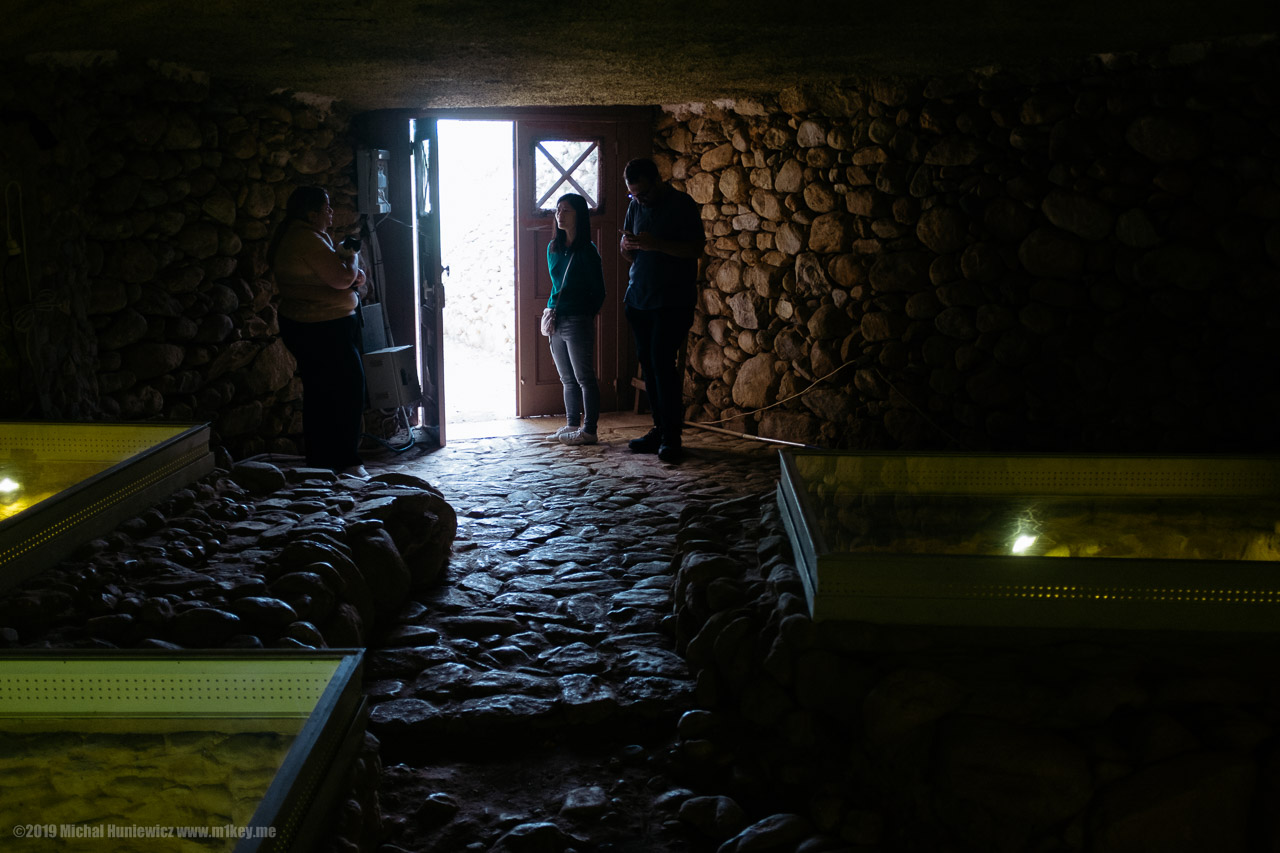
What was disturbing about the mound was that it smelled, there was humidity inside some of the tombs where air-conditioning didn't work, and a couple of the tombs were crawling with insects. We informed the lady.
ISO 640, 23mm, f/2.0, 1/60s.
Entrance to the Mound

Darius promised himself he'd return to subjugate the Greeks. Instead, he died six years later, was embalmed, and entombed in the rock-cut sepulchre at Naqsh-e Rostam that he had been preparing like a pharaoh. [9] But the threat to Greece was far from over.
ISO 200, 23mm, f/3.6, 1/550s.
Thermopylae
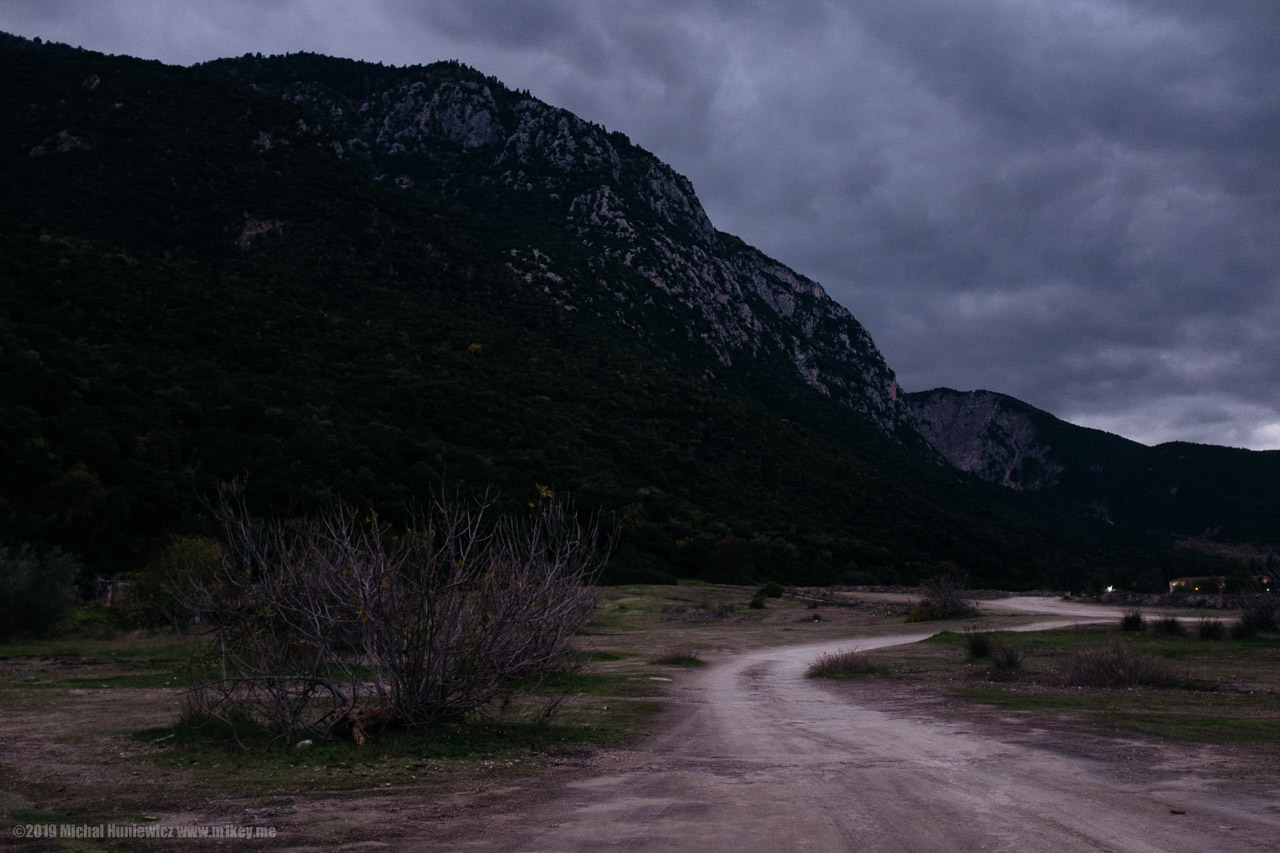
For ten years after Marathon, the second Persian invasion of Greece began. [10] We are now in Thermopylae.
ISO 1250, 23mm, f/2.0, 1/60s.
Hot Gates
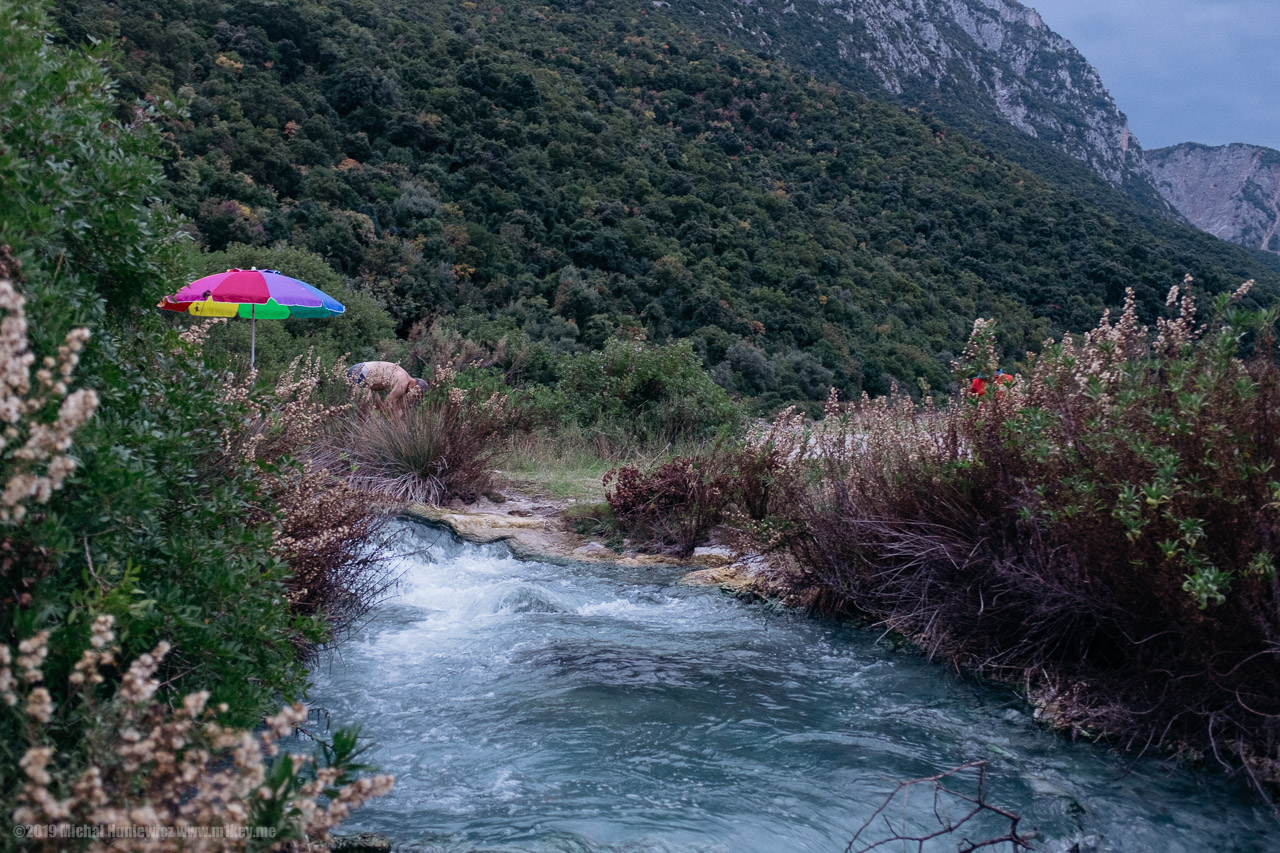
Thermopylae means hot gates, and it was an ancient spa. [11] The place today still has that old creek, and smells of sulphur like Iceland. The Persians attacked from the sea, like last time, but also marched a huge land army across Asia Minor, building a makeshift bridge at Hellespont (the Dardanelles), and the Greeks met them here, at Thermopylae.
ISO 1600, 23mm, f/2.8, 1/60s.
From Above
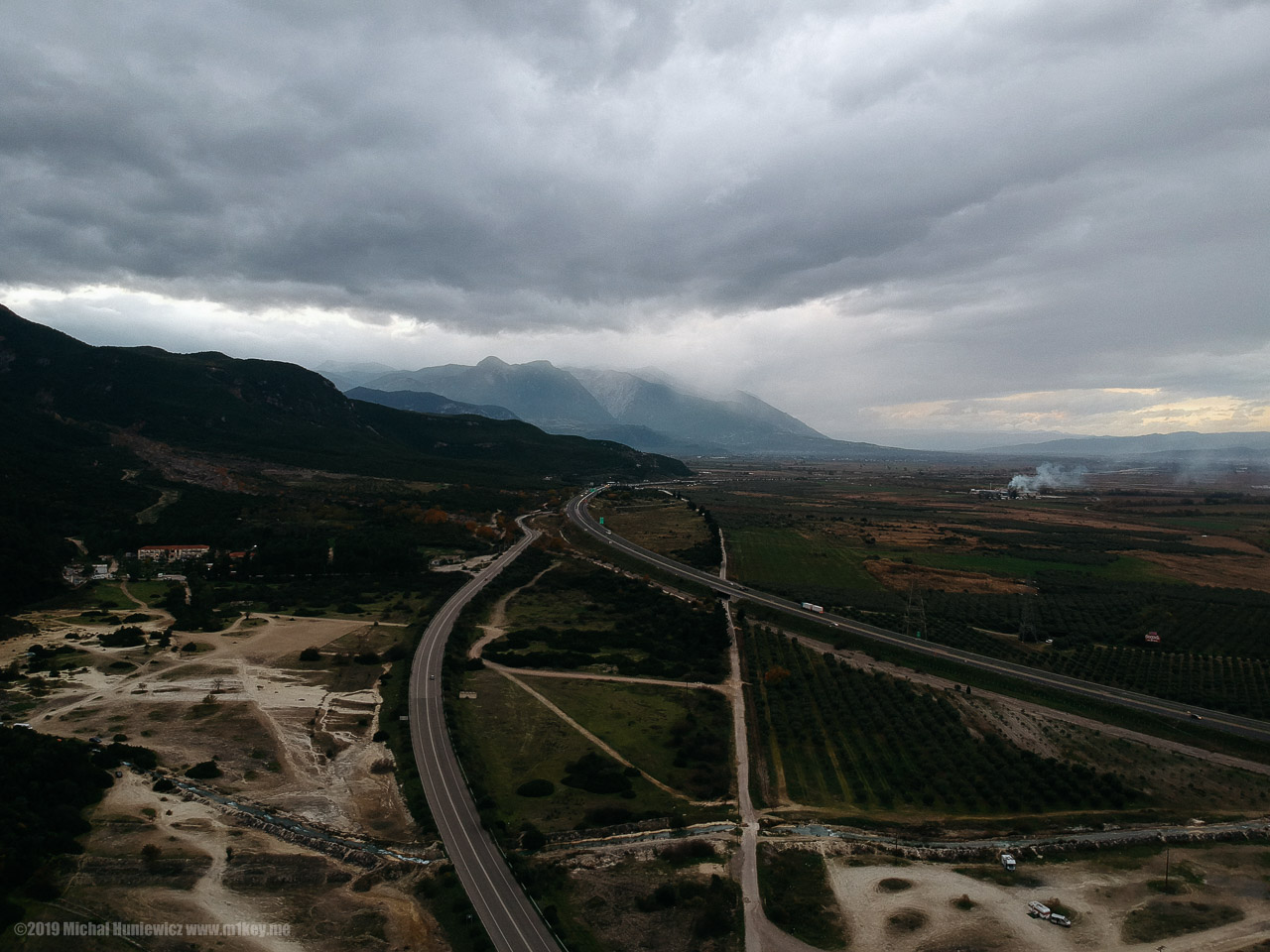
Why defend here, of all places? The land has changed much, but back in the day, the sea was almost hitting against the mountains. Today it's a large plain, formed by accretion of fluvial deposits over the centuries. Now, there was no cliff (the one you saw in the 300 film), but there was a causeway - apparently, only wide enough for a single chariot to traverse. Here, the Persian masses met resistance, and Europe would not see another invasion of this scale until the D-Day in 1941. [7]
ISO 103, 4mm, f/2.6, 1/30s.
Battle Map
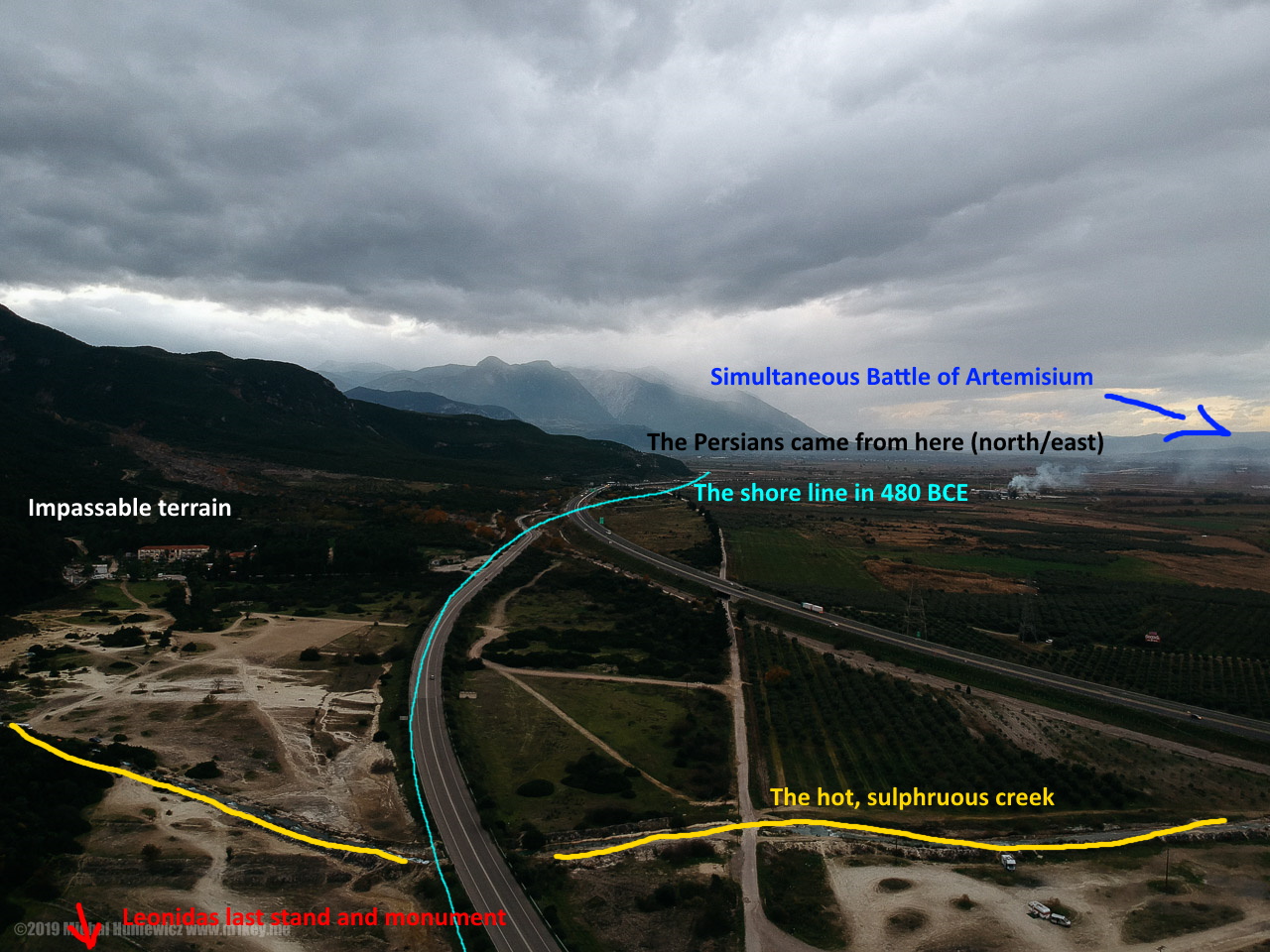
This is my crudely made battle map. I don't know where the so called Phocian Wall was (an old wall restored by the Spartans before the battle).
This place is so good for defence that there was another Battle of Thermopylae here in 1941, fought between Nazi Germany versus New Zealand and Australia (to the shame of some of the Greeks, as they weren't here, their army having already surrendered). [20]
This place is so good for defence that there was another Battle of Thermopylae here in 1941, fought between Nazi Germany versus New Zealand and Australia (to the shame of some of the Greeks, as they weren't here, their army having already surrendered). [20]
ISO 103, 4mm, f/2.6, 1/30s.
Leonidas
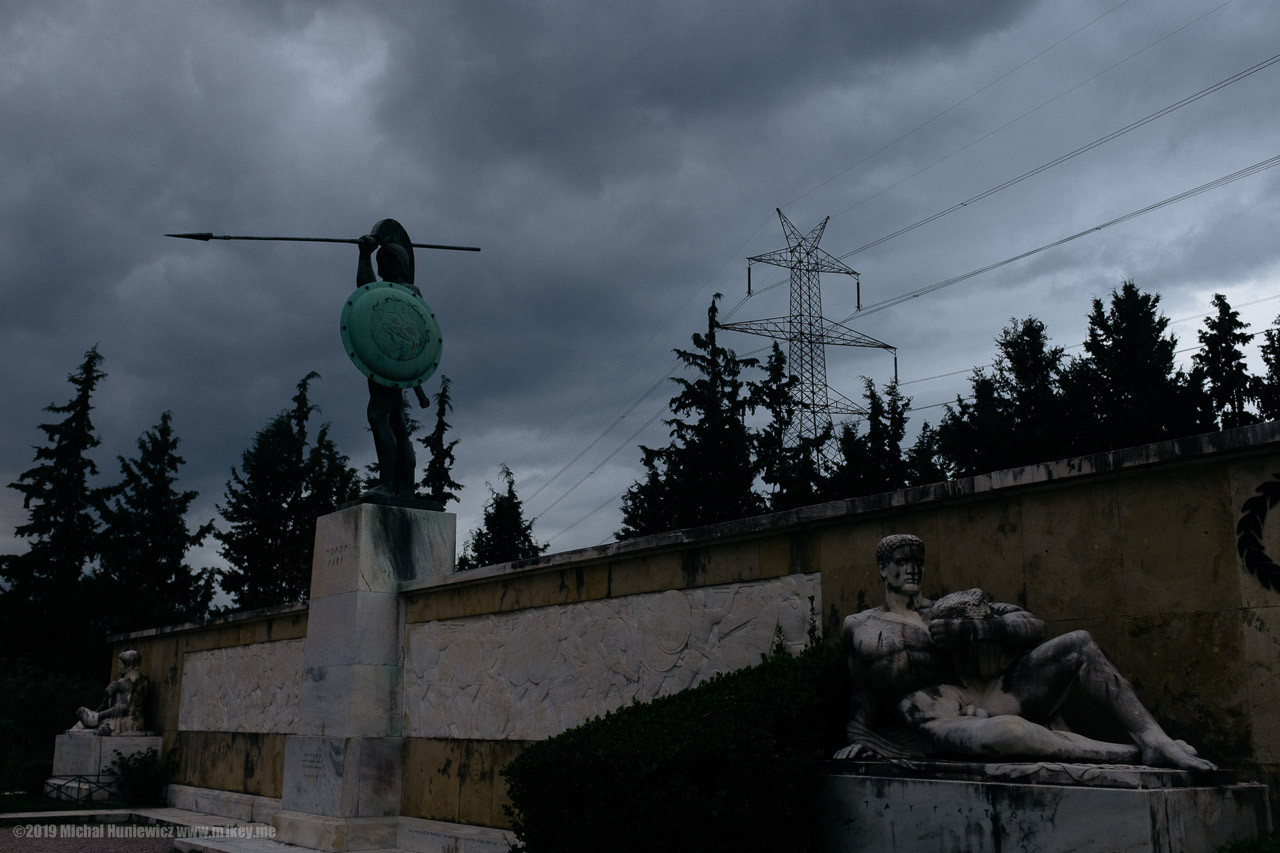
It was the Spartans who stood against the Persians here, but they were initially supported by allies. Still, much less numerous than the Persians, of whom there were 70 to 300 thousand according to modern estimates. Sparta was just an agglomeration of four villages, but it was a military superpower, founded upon slavery of the helots.
ISO 200, 23mm, f/3.6, 1/340s.
Memorial
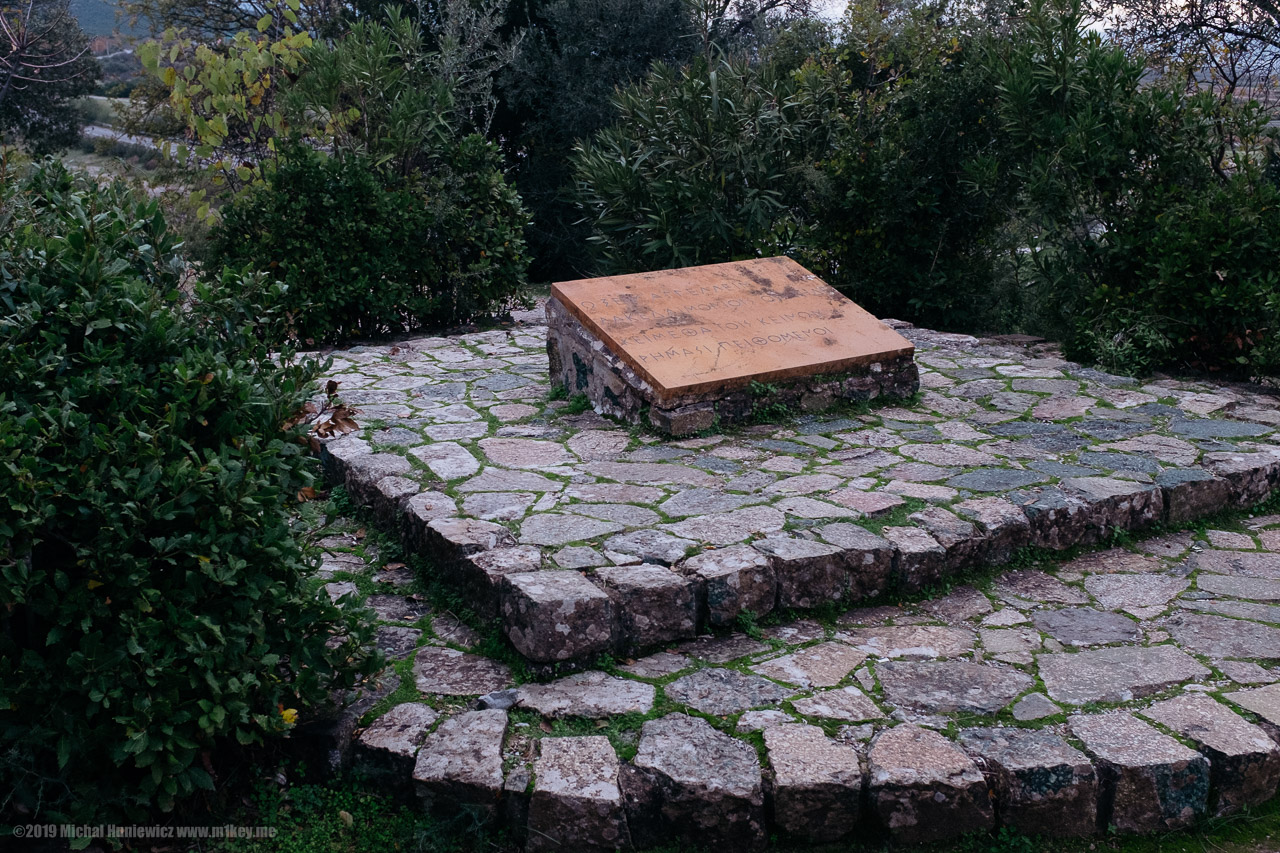
The Greeks fought for three days, using the terrain as a force multiplier. They were, however, betrayed by a Greek named Ephialtes of Trachis [12], and surrounded. Leonidas supposedly said to him "May you live forever", which was an insult for a Spartan warrior, as they were meant to die in battle. Leonidas sent most of the fighters home, but the Spartans and the Thespians stayed to make their last stand, to give the rest of the army some hope of returning back into Greece, and fighting on against the Persians. Themselves, they lost the battle but won immortality.
The memorial here asks you to go to Sparta, and tell them what happened. That's because nobody survived to tell the story.
Well, almost. Aristodemus of Sparta survived, as he was sent back to Sparta due to his eye disease with a fellow Spartan, also nearly blind, named Eurytus. [14] Eurytus would, however, disobey the order to return, and fight among the 300 after all, bring shame to Aristodemus, who was branded a coward. [15]
The goat path that Ephialtes showed to the Persians that allowed them to surround the Greeks is today a 5-6 hour long hike you can do with a guide or alone. I think it begins at Ιερά Μονή Παναγίας Δαμάστας.
The memorial here asks you to go to Sparta, and tell them what happened. That's because nobody survived to tell the story.
Well, almost. Aristodemus of Sparta survived, as he was sent back to Sparta due to his eye disease with a fellow Spartan, also nearly blind, named Eurytus. [14] Eurytus would, however, disobey the order to return, and fight among the 300 after all, bring shame to Aristodemus, who was branded a coward. [15]
The goat path that Ephialtes showed to the Persians that allowed them to surround the Greeks is today a 5-6 hour long hike you can do with a guide or alone. I think it begins at Ιερά Μονή Παναγίας Δαμάστας.
ISO 1600, 23mm, f/5.0, 1/50s.
Battle of Artemisium

Simultaneously, the Battle of Artemisium of was fought nearby by the Athenians, who by then were becoming a naval power. Hearing about the defeat, they withdrew, their position there no longer making any sense, as there was nothing to stop the land army of the Persians going to Athens.
ISO 200, 23mm, f/5.6, 1/800s.
Sounion
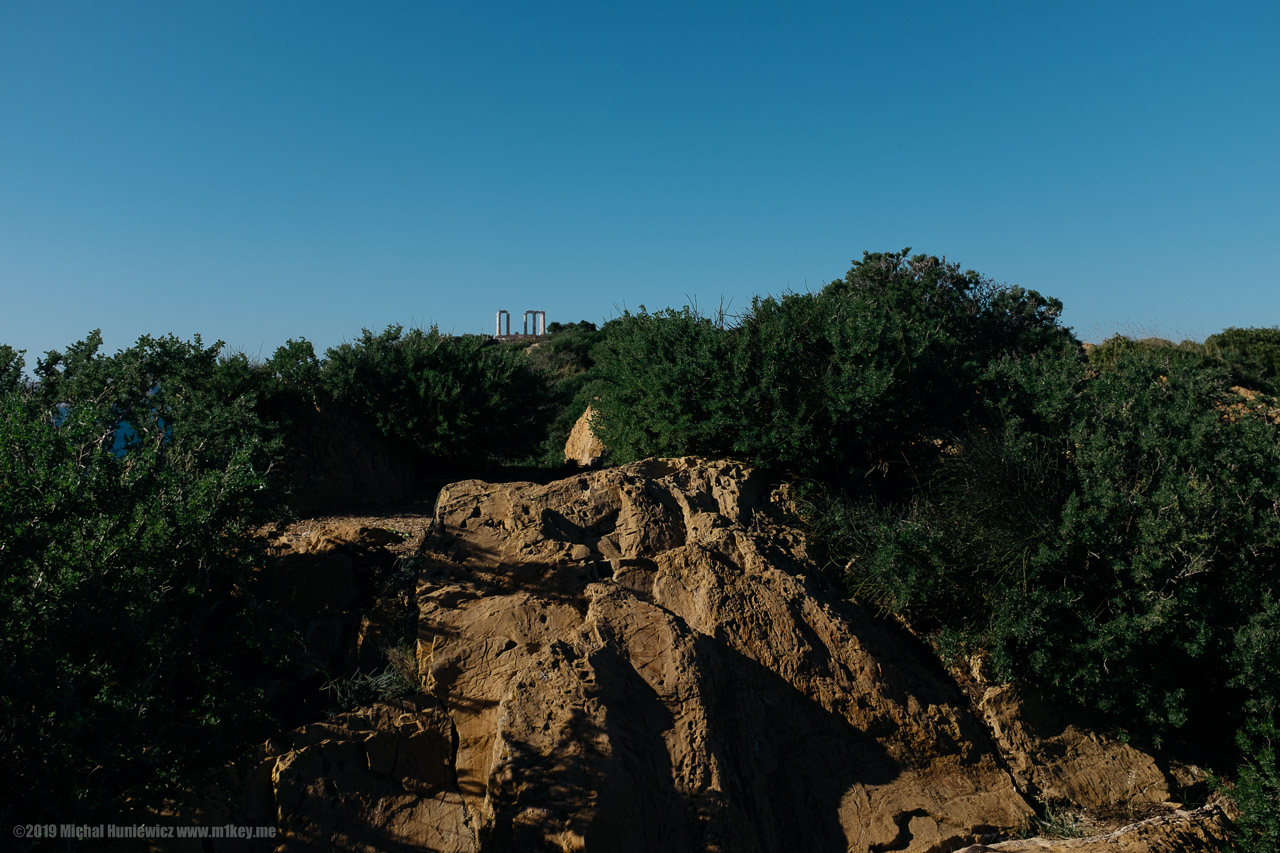
Athens was evacuated, and the burnt by the Persians. But the Greeks tricked the Persians into what was supposed to be the decisive battle of the campaign, a naval battle at Salamis.
In the photo, the Temple of Poseidon, east of Athens.
In the photo, the Temple of Poseidon, east of Athens.
ISO 200, 23mm, f/5.6, 1/1400s.
Temple of Poseidon
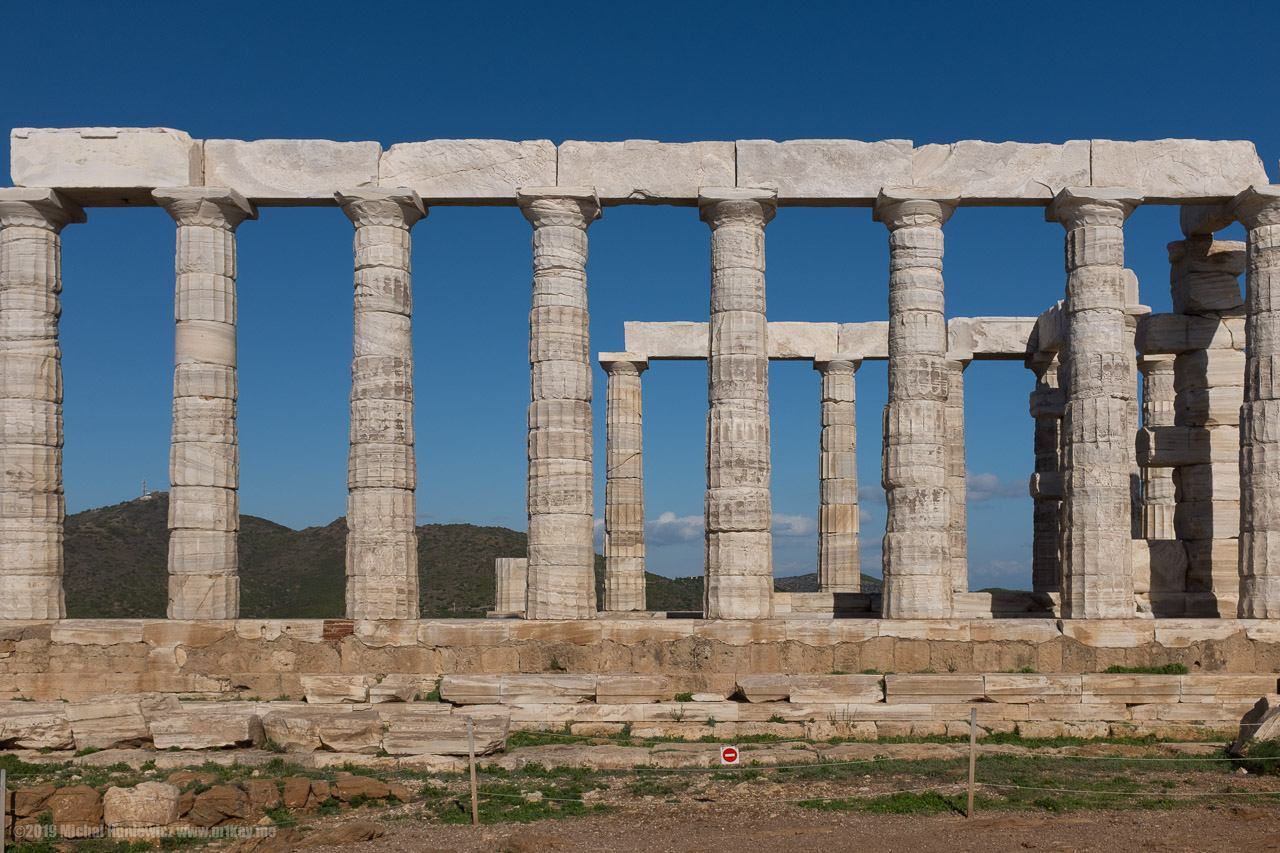
Amazingly, the Greeks won. And so now, they had a navy while the Persians did not. They could destroy the Persian makeshift bridge at Hellespont, thus trapping Xerxes with his army in Greece. Xerxes had no choice but to return to Persia, albeit leaving some of his crack troops to conquer Greece in his absence.
ISO 200, 23mm, f/5.6, 1/2500s.
Columns
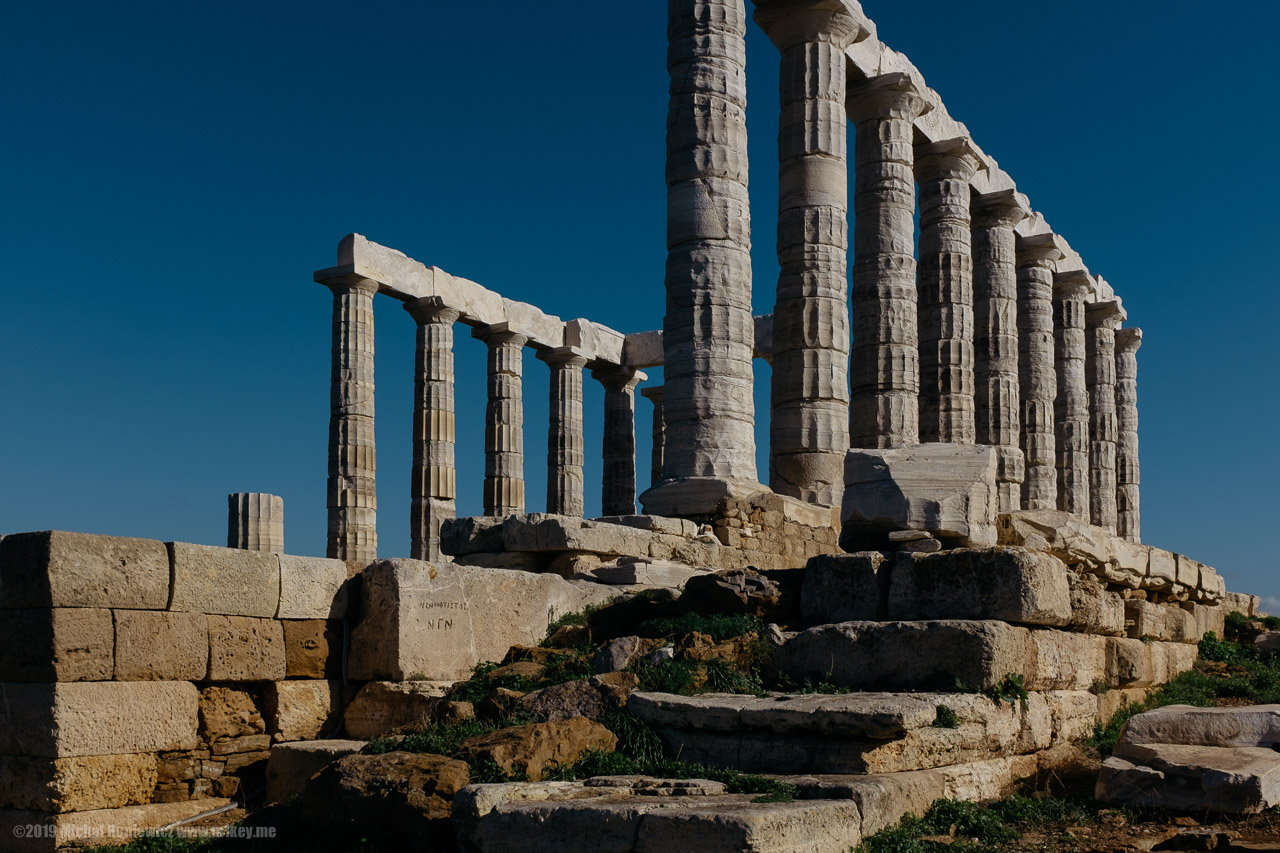
One year later, led by Mardonius, the Persians suffered a heavy defeat at the Battle of Plataea. [13] The Greeks, at last united, defeated the invader. Mardonius was slain. One of those fighting among the Greeks was no other than Aristodemus, the man branded coward after Thermopylae. "Aristodemus charged, berserker-like, out of the phalanx and fought, in the opinion of Herodotus, with the most bravery of all the Spartans before falling in battle." The Spartans agreed he had redeemed himself, but did not offer him any special honours, because he fought lacking discipline required of a Spartan warrior.
The second Persian invasion came to an end.
The second Persian invasion came to an end.
ISO 200, 23mm, f/5.6, 1/2500s.
Modern Athens
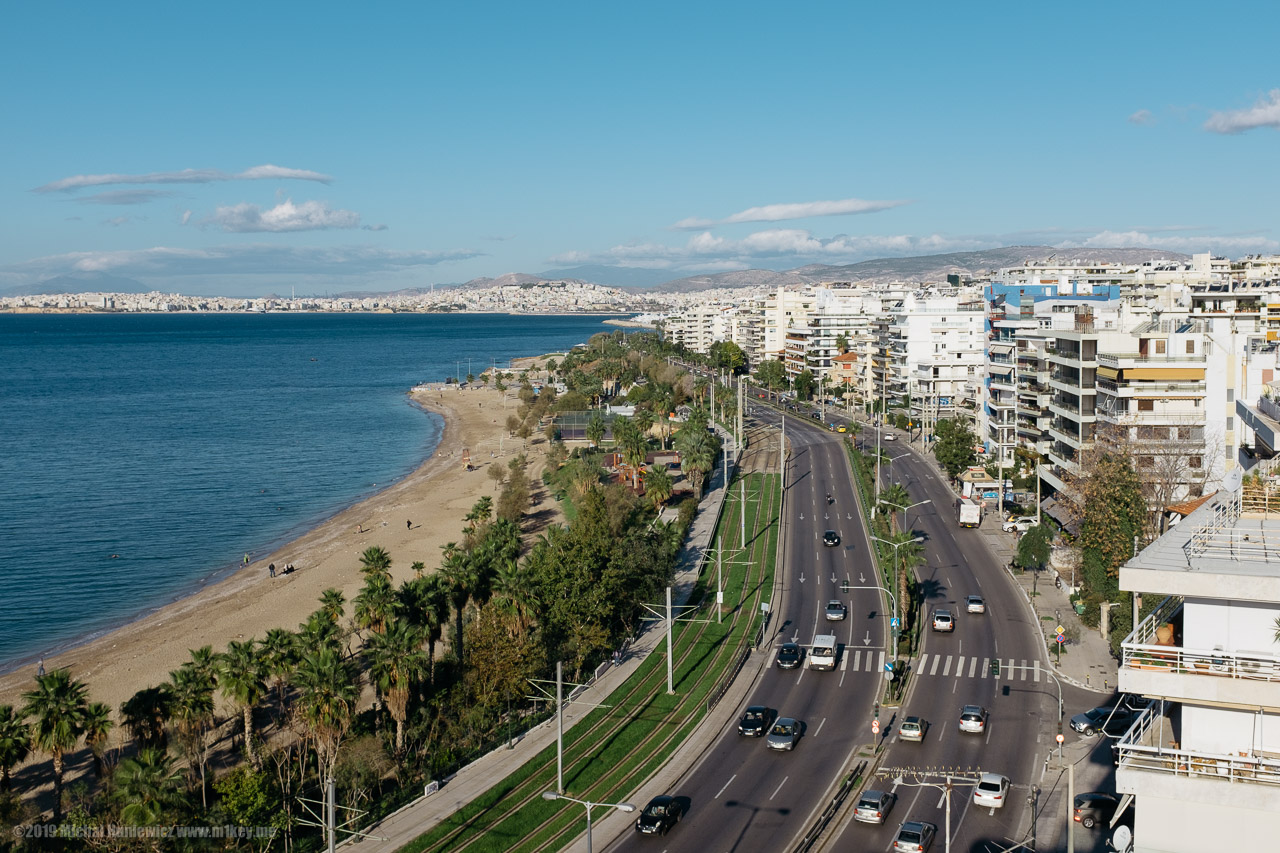
Xerxes would die and be buried beside his father, but The Greeks would not live in peace. Free once again to squabble between themselves, they'd fight wars - Sparta becoming weary of Athens slowly morphing into a maritime empire. The brave Spartan warriors would be defeated by the Thebans at Leuctra, by the so called Sacred Band of Thebes, a troop of male lovers. [16]
ISO 200, 23mm, f/5.6, 1/1400s.
Sea
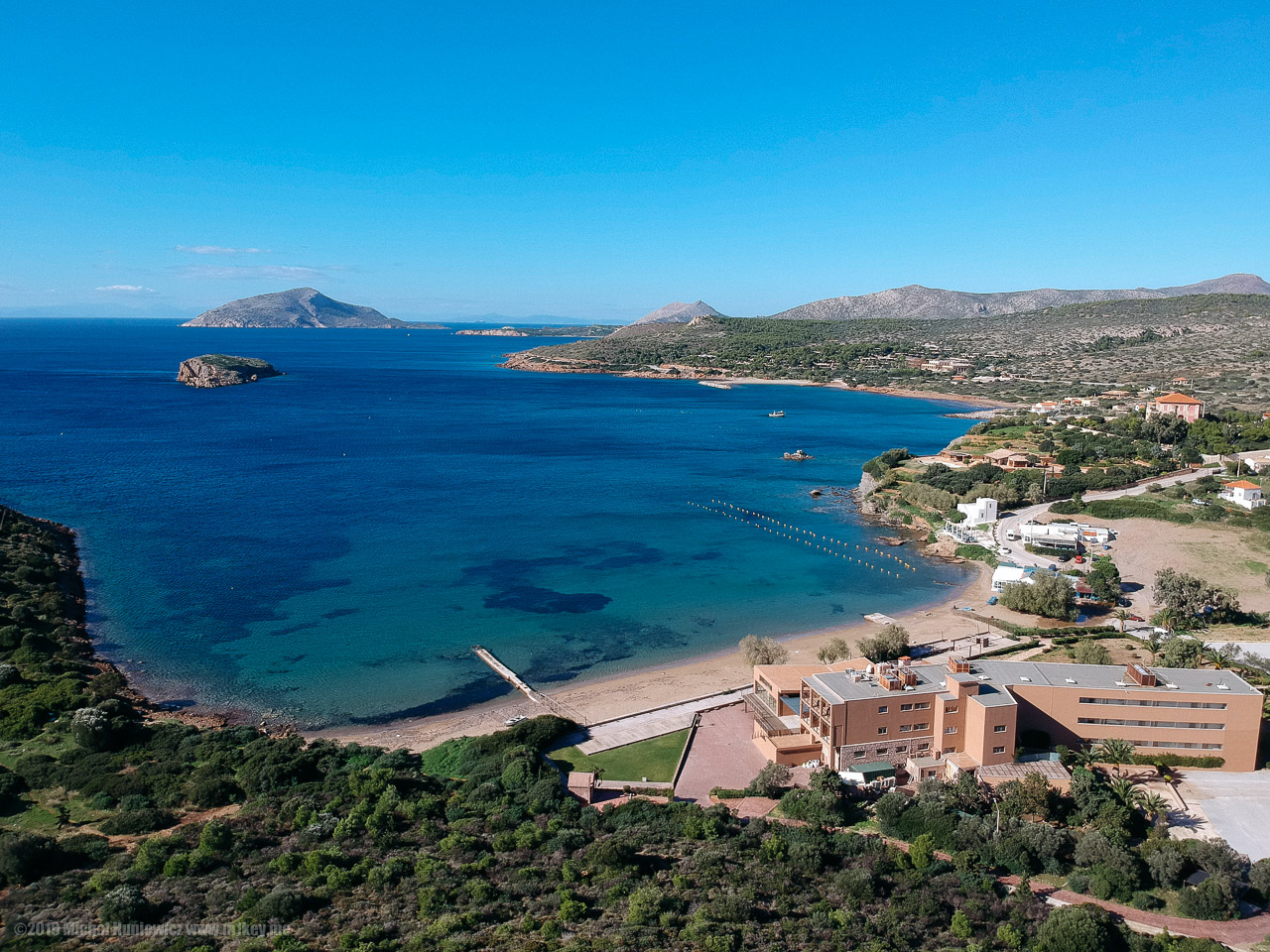
The dream of united Greece and Persia would be realised, but not by the Persians. More than a hundred years after the battle of Thermopylae, the Macedonian king Philip II would have a son named Alexander... [18]
ISO 100, 4mm, f/2.6, 1/1000s.
Beirut-like
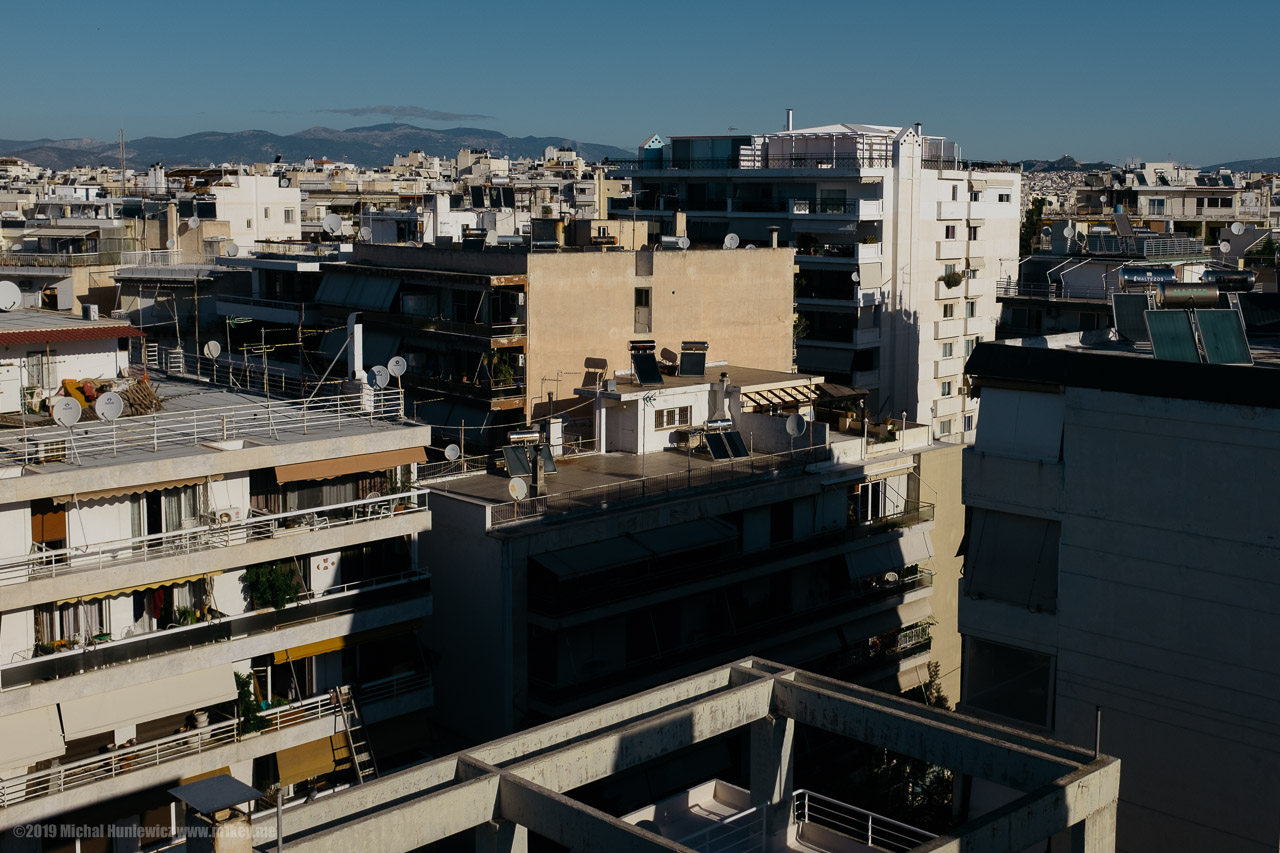
Athens would enter a period of decline, outshined by Constantinople in the Middle Ages, then ruled over by the Ottomans. In 1896, the first Summer Olympics would be held here. Confusing the 225 km Pheidippides run with the 42 km march from Marathon to Athens, the marathon race would be established. [17]
ISO 200, 23mm, f/5.6, 1/2000s.
Ammar
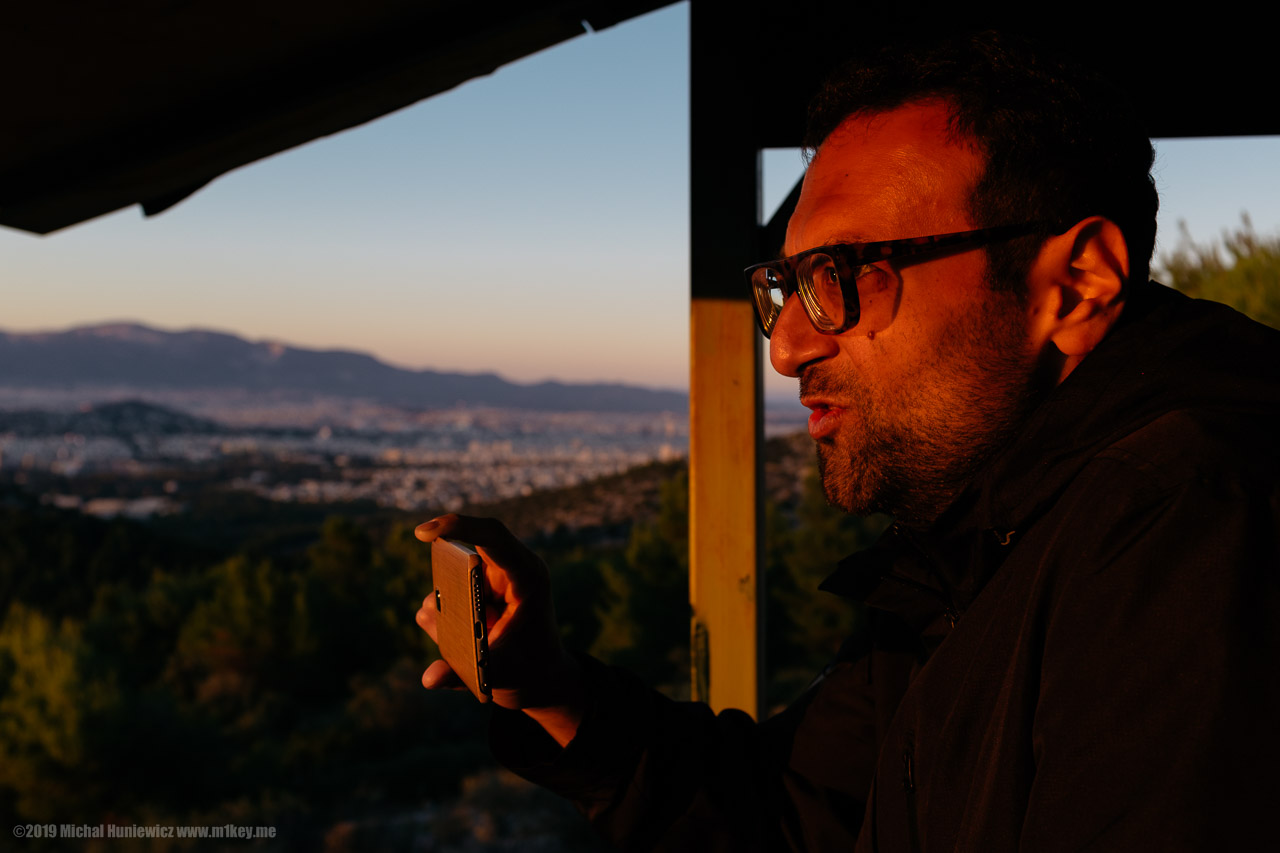
For Ammar's birthday, we sent him around the world on a surprise trip. We met him in Athens just before his return to London. Here, he's recording a video describing the sunset.
ISO 200, 23mm, f/4.0, 1/180s.
Acropolis
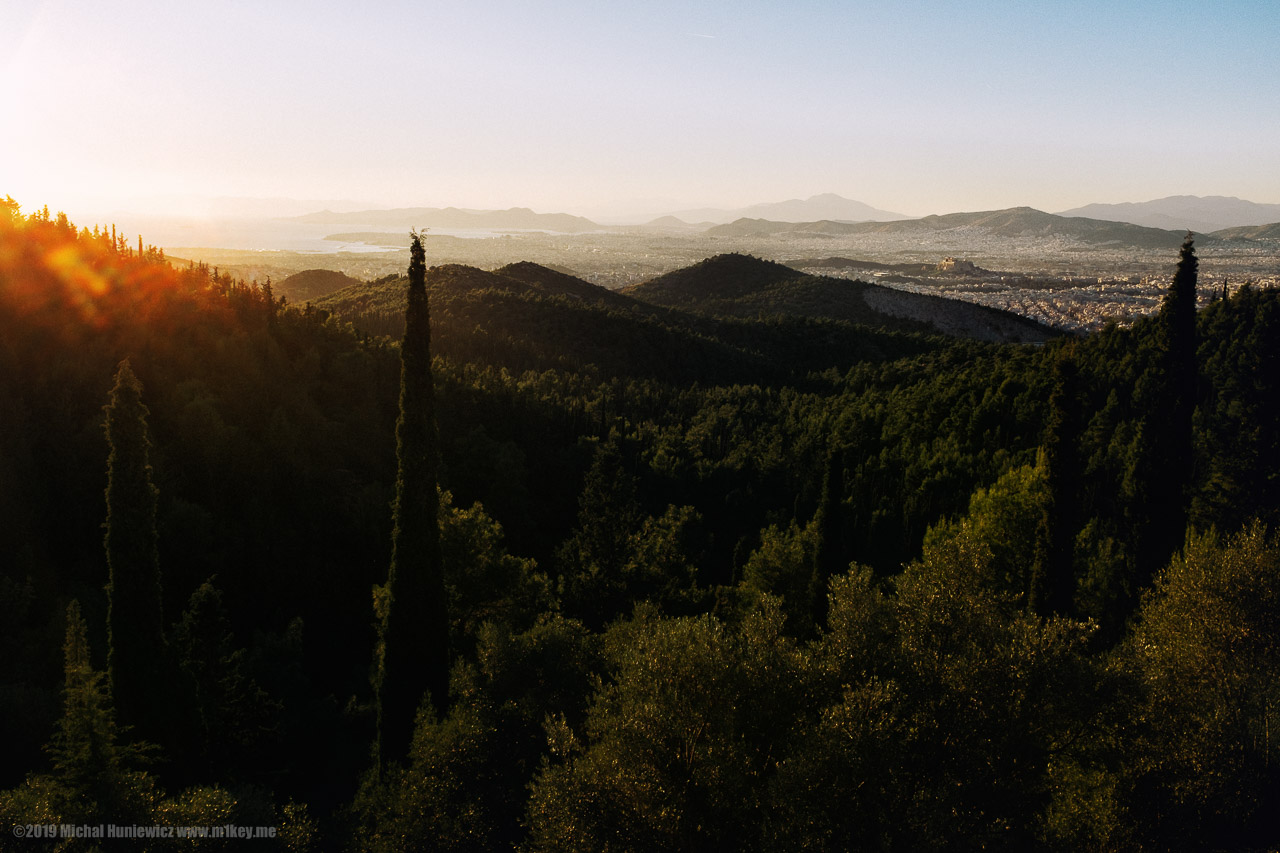
The view of Athens, with the sea on the left, and the Acropolis on the right.
Tom Holland writes that while we remember and respect the ancient Greeks, we must not forget the Persians, who demonstrated to "future ages the very possibility of a multi-ethnic, multicultural, world-spanning state." [7]
Tom Holland writes that while we remember and respect the ancient Greeks, we must not forget the Persians, who demonstrated to "future ages the very possibility of a multi-ethnic, multicultural, world-spanning state." [7]
ISO 200, 23mm, f/7.1, 1/350s.
Goodbye
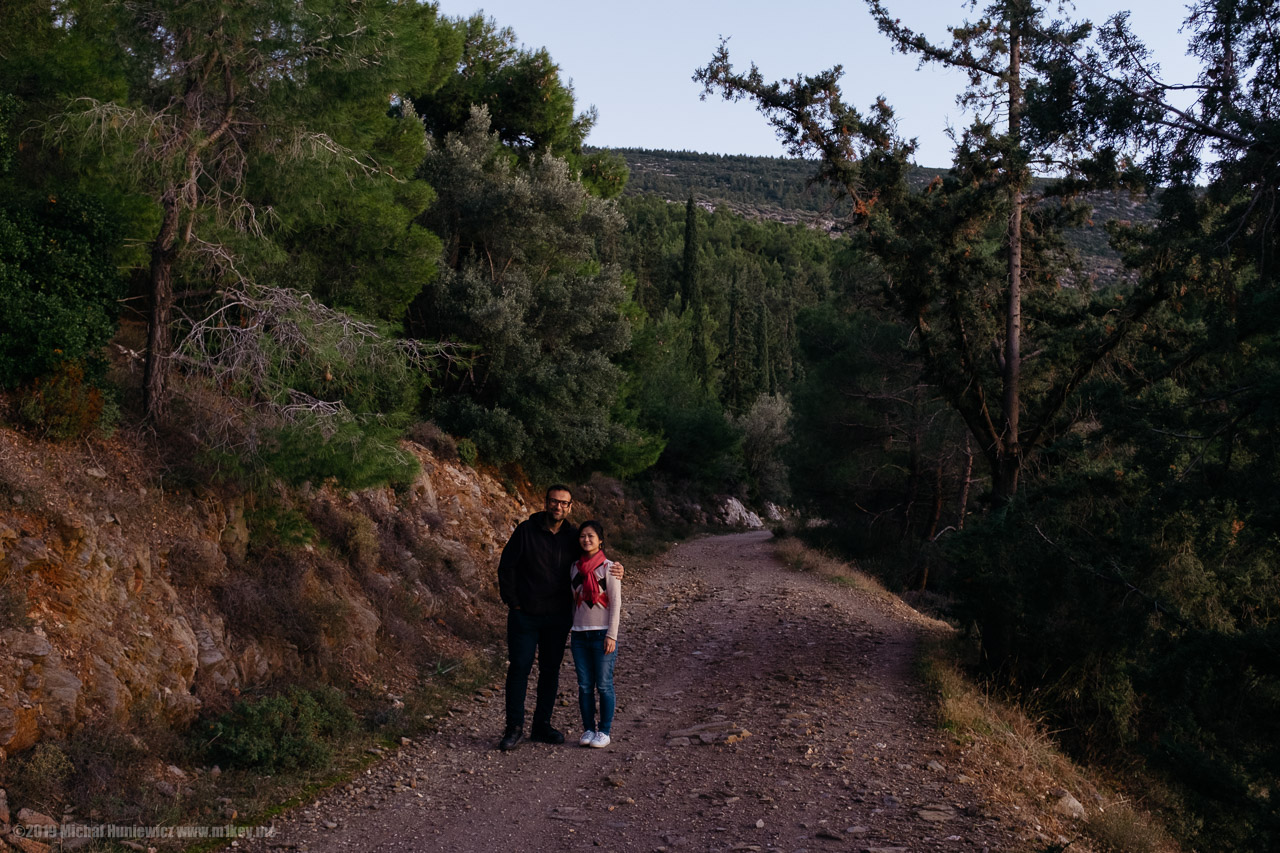
"A thousand years from now [...], two thousand, three thousand years hence, men a hundred generations yet unborn may for their private purposes make journey to our country. They will come, scholars perhaps, or travellers from beyond the sea, prompted by curiosity regarding the past of appetite for knowledge of the ancients. They will peer out across our plain and probe among the stone and rubble of our nation. What will they learn of us? Their shovels will unearth neither brilliant palaces nor temples; their picks will prise forth no everlasting architecture or art. What will remain of the Spartans? No monuments or marble or bronze, but this, what we do here today."
Thanks for finding the time to look at the photos.
Thanks for finding the time to look at the photos.
ISO 1250, 23mm, f/4.0, 1/60s.
